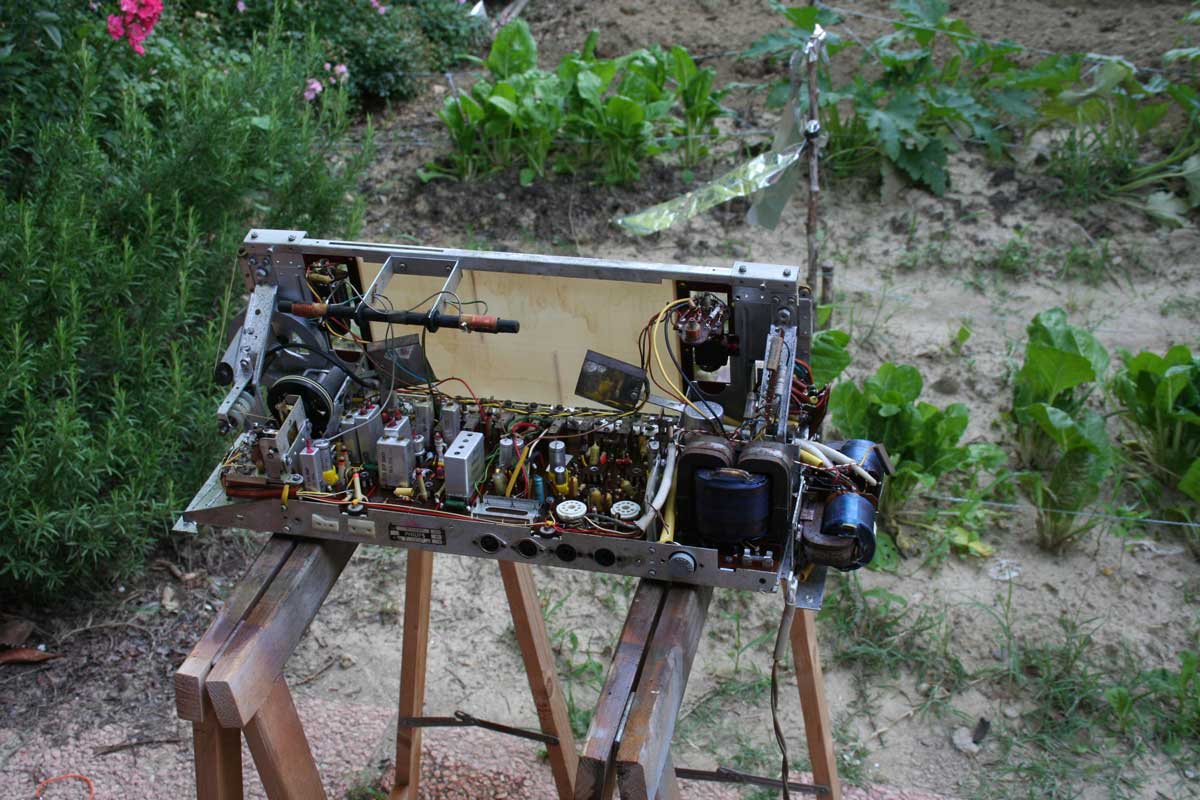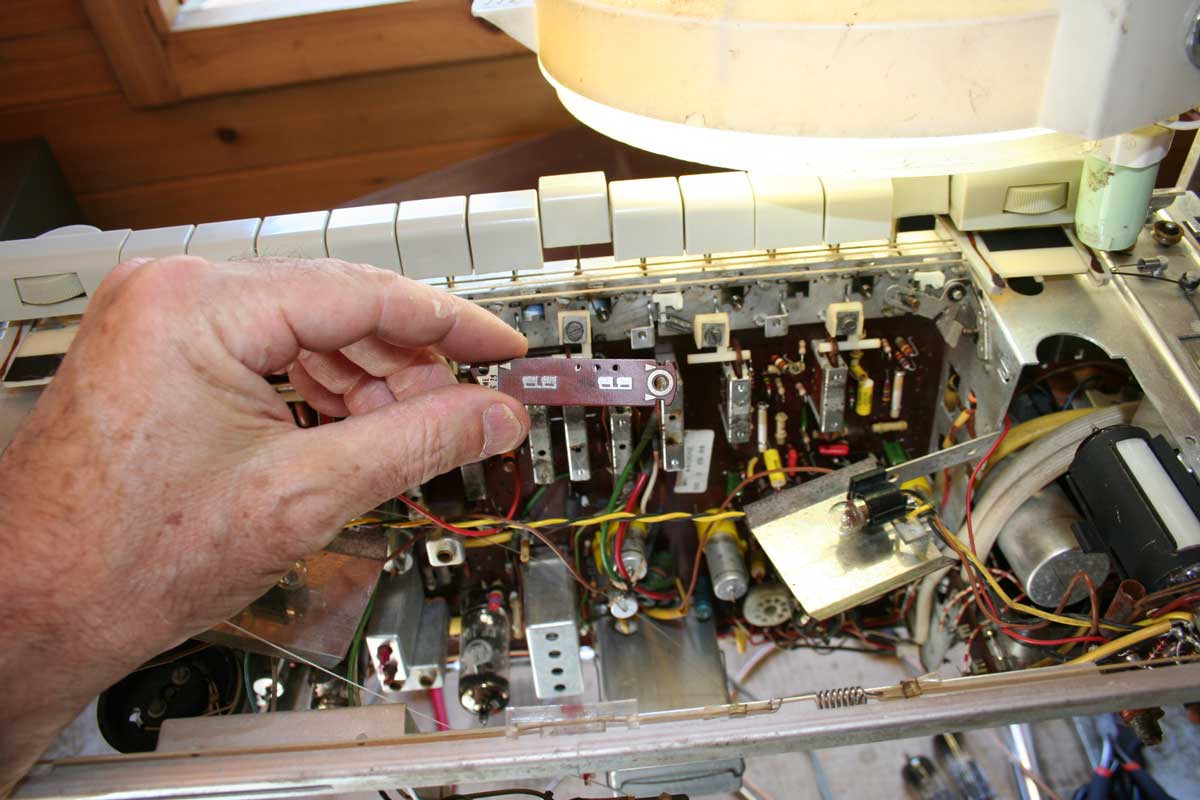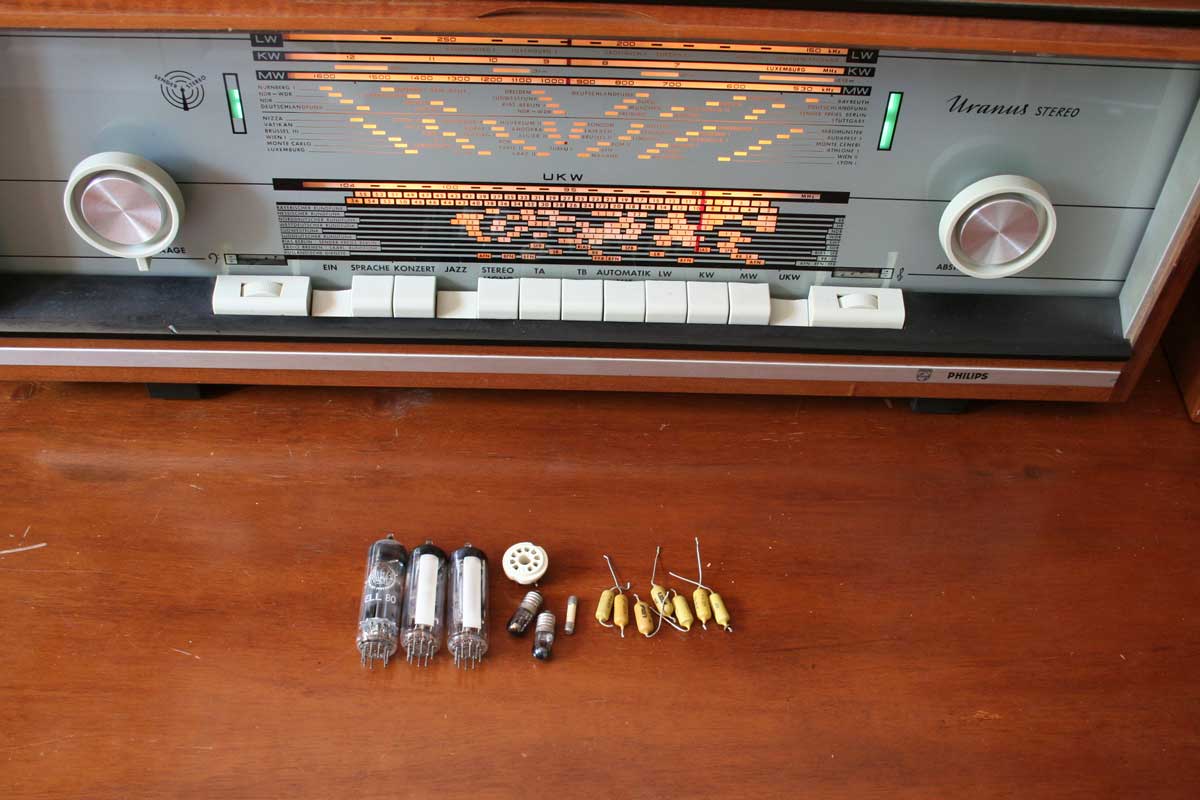 german radios - cn
german radios - cn
 german radios - cn
german radios - cn
 german radios - cn
german radios - cn
Anno: 1966/1967
Valvole ECC85 ECH81 EAF801 EF184 EM87 EM87 ECC808 ECC808 ECC83 ELL80 ELL80
Semiconduttori 4× AF126
Principio generale Supereterodina (in generale); ZF/IF 460/10700 kHz
N. di circuiti accordati 6 Circuiti Mod. Amp. (AM) 12 Circuiti Mod. Freq. (FM)
Gamme d'onda Onde medie (OM), lunghe (OL), corte (OC) e MF (FM).
Tensioni di funzionamento Alimentazione a corrente alternata (CA) / 110-125; 220 Volt
Altoparlante 2 altoparlanti / Ø 21 cm = 8.3 inch
Dimensioni (LxAxP) 730 x 240 x 250 mm / 28.7 x 9.4 x 9.8 inch
Stereo-Decoder
Potenza d'uscita 2 x 9 W
Peso netto 10.5 kg / 23 lb 2 oz (23.128 lb)
 german radios - cn
german radios - cn
The Philips Saturn 653 / 4E / 3D is the second most important model of the house in 1955, and in the intentions of the manufacturer aspires to be one of the most popular models of all German production for the innovative technology used.
As a matter of fact, they met their goal and produced a unique piece of technology, for both the German and World Wide market.
It’s peculiarities are:
The Philips Saturn 653 / 4E / 3D has dimensions in line with the top models, but it’s woodwork, frames, and speaker covers contribute in giving it a much sleeker, eye-pleasing look to complete any furniture display.
The Low frequencies are particularly deep thanks to the separated OTL amplifiers and to the impressive size of the subwoofer, approximately 21cm in diameter (more or less 8.3 inches).
Exactly the same as for the Capella 753/4E/3D model I suggest making good use of the mid-tweeter, as this successfully crafted speaker (17 cm in diameter) makes the mid and Hi frequencies pleasant and true to life, especially if seated in front of the Machine.
High and Mid Frequencies sections
The FM group is of the variable permeability type. It has a high amplification and stability.
Being equipped with an automatic noise suppressor in the presence of signals below 1.7 V, the output is muted to avoid hearing rustling and noise when searching for stations.
The de-emphasis circuit is set to 50 uS, valid all over the world except for the USA and South Korea. In these countries, the filter should be increased to 75 uS.
The AM section is equipped with a rotating antenna for the OM and OL bands. The antenna can be controlled by a knob on the front.
The mid-frequency sections are composed of three separate filters for AM and FM. The first of these filters is adjustable. The second is the amplifier filter and the third filter further increases the selectivity of the device.
All the listed solutions translate into a very low distortion, an increase in power, and a pleasantness of use hardly ever obtained in other appliances.
This is the Philips Saturn 653/4E/3D

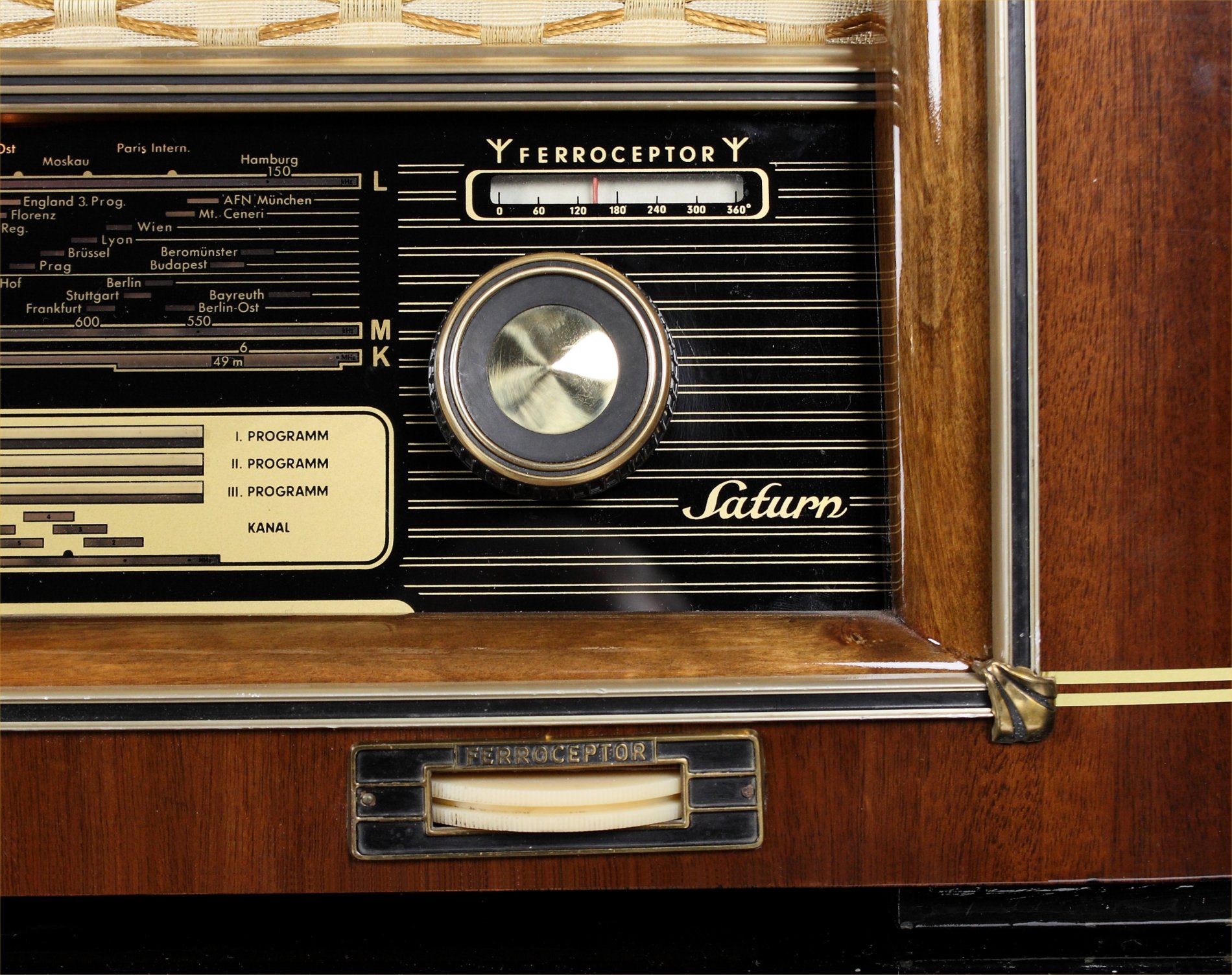
Bluetooth receiver embed
Each radio is equipped with a cable for connection to any digital device.
- Bluetooth receiver embed - The unit is equipped with a BLUETOOTH receiver powered directly by the receiver power supply. This makes it possible to control the amplifier from any external digital device as an IPAD, a Smartphone, or a sophisticated multimedia station. So you can hear your preferred web station or your lossesless file without cables on the room. Wireless Receiver can be equipped upon requests.
– Multi Platform Connection – A customized adaptation cable to connect any digital device as Iphone, Smartphone, Laptop, CD Player etc. will be provided with this radio. This special cable suits the different impedances between the modern equipment and the receiver. Furthermore the two stereo channels flow into one without increasing the load to the input unit.
In 1891, the brothers Gerard and Anton Philips, started to produce the first incandescent bulbs in Eindhoven.
Later, Philips specialized in the production of electro- medical equipment, and in 1918 introduced the first X-ray tube.
In the following years, Philips began specializing in the broadcasting industry. In 1932 the company succeeded in selling over one million radio equipment and became the world’s first producer.
During the Second World War, Philips transferred to the Netherlands Antilles, and returned to the Netherlands at the end of the conflict.
In 1958 Philips was the only multinational to have a pavilion dedicated to the Expo in 1958 known as Le Poème Electronique.
In the second post- war period, began the production of the first televisions, then the launch of the music cassettes in 1963 and the production of the first integrated circuit in 1965.
In 1982 Philips launched with Sony the first compact disc player.
In 1984 Philips acquired the control of the German Grundig.
In the 90's Philips faced a financial crisis.
In 1991 it inserted on the market the Video CD and it is one of the first companies in the world to develop high definition television.
In 1999 Philips established a joint venture with LG Electronics, named LG Display, which ends in 2009.
In 2006 together with Sony launched the first Blu-ray.
In 2009 Phillips launched the first full-HD LCD TV in 21:9 format.
Phillips holds 48,000 registered patents.
Currently, the production is focused on low- energy lighting products and LED systems and services for diagnostics and production of medical devices.
Year of production: 1955
8 AM Circuits
11 FM Circuits
Wavebands:: LW, MW, SW, FM
Loudspeakers:
1 sub-woofer
1 mid-woofer
2 mid-tweeter
Operating voltage (CA): 110; 125; 220; 240 Volts
Dimensions (LHP): 680 x 415 x 265 mm / 26.8 x 16.3 x 10.4 inch
Net weight: 13.4 kg / 29 lb 8.2 oz
11 Tubes: ECC85 ECH81 EF89 EBF80 EM80 EABC80 EC92 UL41 UL41 EL84 EL84
Rotating ferrite aerial for AM bands
Ironless output



The preamplifier consists of two stages. At the entrance, the volume potentiometer is equipped with three sockets for physiological correction (loudness). The intervention curves are visible in the first graph.
Philips considers the frequency of 800 Hz to be the center of the audible band, so the treble and bass controls are calculated to enhance the frequencies above and below that value. The choice of this frequency is very important for the musicality and the pleasantness perceived by listening to the device.
In the second graph the frequency response of the preamplifier, with the tones enhanced to the maximum. You notice the different equalization you get by listening to the AM bands (Long Waves, Medium, Short) or listening to the FM band and PHONO.
The final stages are two distinct, one for the low frequencies and one for the high frequencies. These amplifiers control separate speakers, a 26 cm woofer for the bass and three speakers for mid/high frequency, with the 17 cm front speaker disconnectable for 3D effect.
The most interesting feature of these final stages is that they are without an output transformer.
The feature that makes this device very interesting is that each final stage uses a pair of EL84 / UL41 in an ironless configuration, ie without an output transformer (the known critical point of the final stage).
The output stage uses the operating principle called Shunt Regulated Push-Pull (SRPP) used today in HIGH-END amplifiers.
The output transformer limits the bandwidth of the entire amplifier. The bass is limited by the inductance of the primary winding, the treble is limited by the parasitic capacitance resulting from the alternation of the primary and secondary windings. The alternating winding of the primary and the secondary windings is also necessary to improve the coupling and thus reduce the dispersed flow.
The reduction of the dispersed flow increases the damping. This is essential in the loudspeakers mounted inside the cabinet of the radios, which do not work in hermetically closed boxes, and which are therefore free to move almost without resistance from the surrounding air.
The two output tubes (EL84, UL41) of each channel, four final valves in total, are connected in series with DC-DC coupling. Each UL41 is configured as a triode.
The output is taken from the cathode of the UL41. The speaker has an impedance of 800 ohms, identical to the average impedance that occurs on the catode, whereby direct coupling (without transformer) is possible between the final stage and the loudspeaker.
The Philips Saturn 653 is therefore totally free of all the problems deriving from the output transformers.
The damping of the loudspeakers is kept high by the low dynamic resistance of the feedback loop.
The tones control system is very efficient.
Above the large tone control knobs there is two bands that lights up gradually indicating the emphasis on the band on which it acts.
The high-tone control knob is linked to two thin ropes. One of them is for the position indicator of the control itself, whereas the other changes the position of the ferrite in the MF transformers modifying the its curve.
By doing so high tones were attenuated/accentuated even before getting to the BF stage.

Bass at max - Treble at max
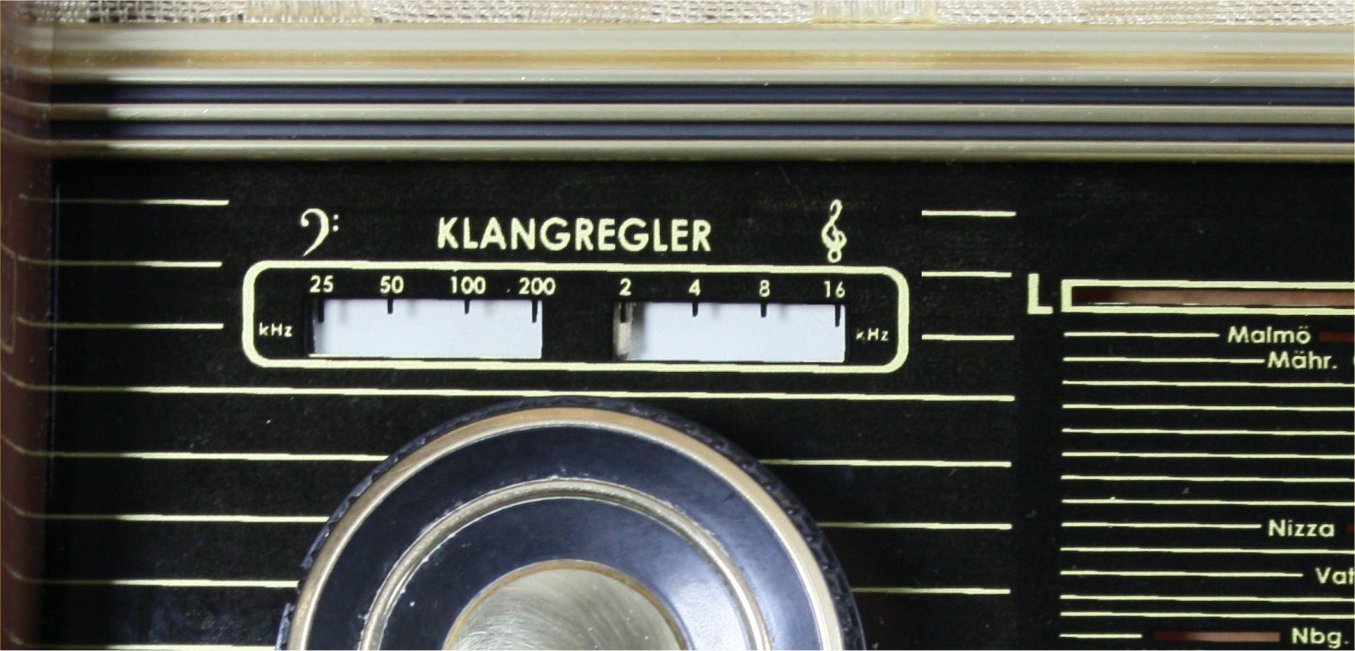
Bass at min - Treble at max

Bass flat - Treble flat
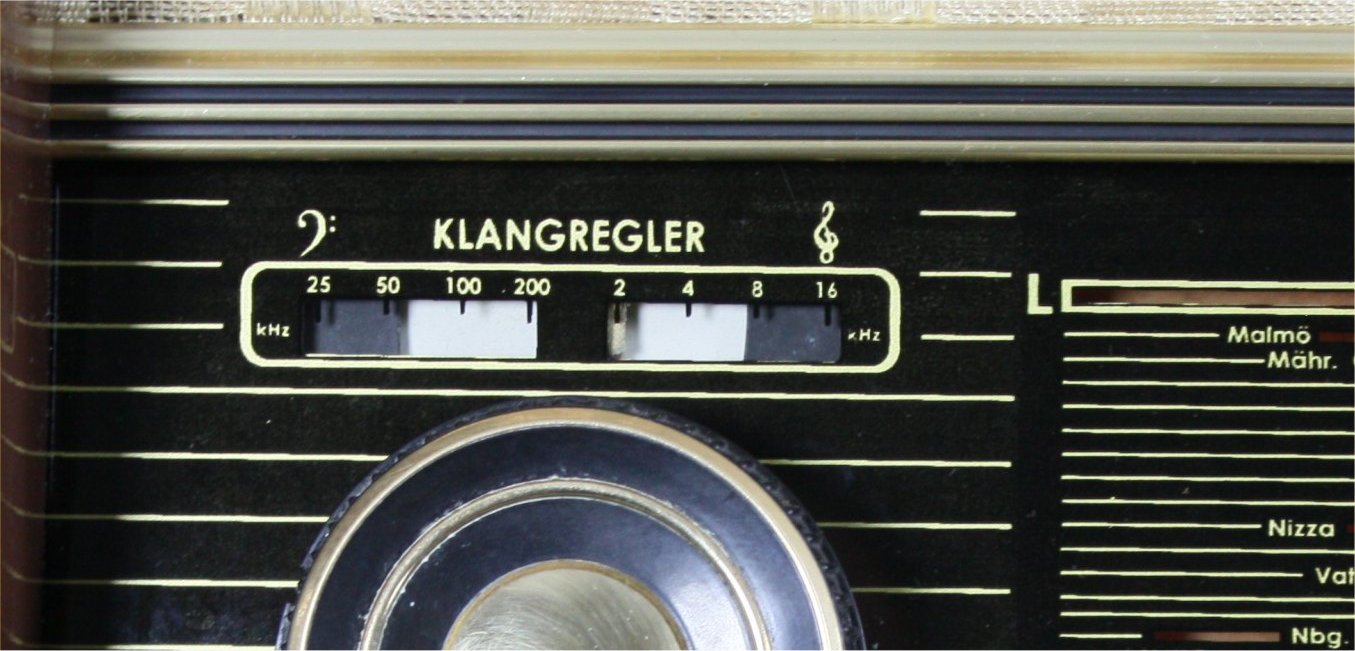
Bass at max - Treble at min

Bass at min - Treble at min

Inside the cabinet there is a dipole for FM reception and a ferrite rotating aerial for AM reception.
Ferrite aerial can be rotated from the outside to achieve a perfect tuning of the device in the AM.
In this picture see the rotation mechanism and the position indicator of the aerial.
The reception sensitivity with internal aerials is very good.
Using an external aerial sensitivity is further increased.
The magic eye has of course been replaced.

The 21 cm loudspeaker, with a 23 mm diameter magnetic core, is placed at the front.
A front 17 cm mid-tweeter can also be switched off if you want to increase the 3D effect.
On the two sides, there are two elliptical tweeters pointing upwards. Radiating to the ceiling of the room to take advantage of the reflections of the environment that add to the direct radiation produce an expansion of the soundstage.
There are no dangers of stationary wave due to the working frequency of these speakers.
There are several options for connecting external speakers.
It is, in fact, possible to connect an external woofer, excluding or not the internal woofer while leaving all the other speakers active.
It is possible to connect external medium-high units, excluding or not the internal mid-tweeters, while leaving the internal woofer active.
It is possible to connect woofers and external medium-high units, excluding or not all, or some, internal speakers.
In the center of the speaker panel is the Magic Eye which indicates the perfect tuning of each station.
KLANGREGLER - Low Tone Indicator (FA Key) and High Tone Indicator (SOL Key).
Just below we find the large Volume knob, with built-in automatic loudness correction.
FERROCEPTOR - Indicator of the position of the internal ferrite antenna. This internal antenna (excludable with the HA key) is used in the OM and OL bands. The internal antenna must be rotated until the best tuning is achieved.
Just below we find the large knob of the Manual Tuning, whose movement is very pleasant being supported by a large flywheel
Under the dials, we meet series of 6 keys.
Starting from the left the keys have the following functions:
AUS - Switch off
TA - Record player
LW - Long Waves
MW - Medium Waves
KW - Short Waves
UKW - FM
 philips - cn
philips - cn

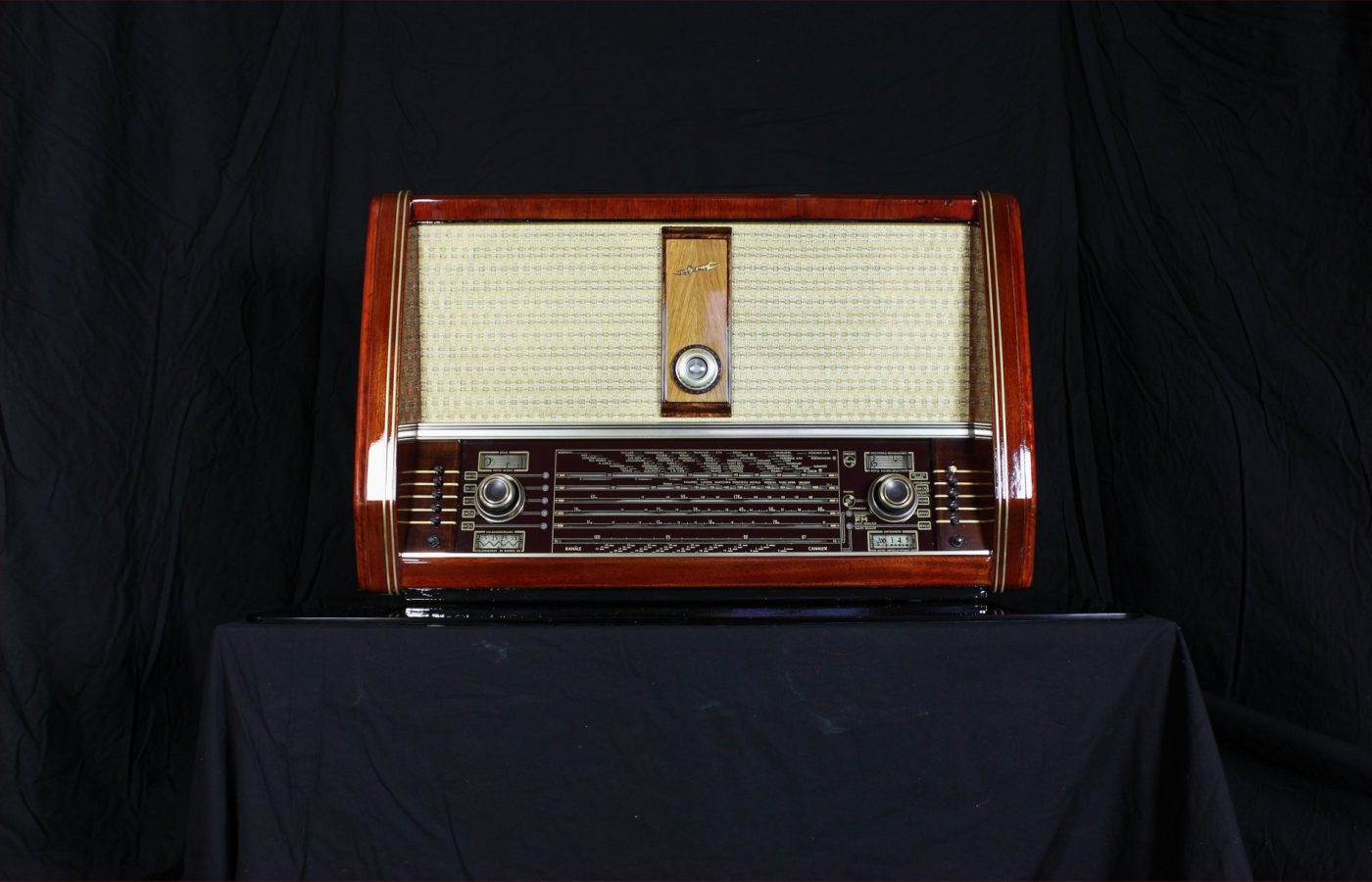

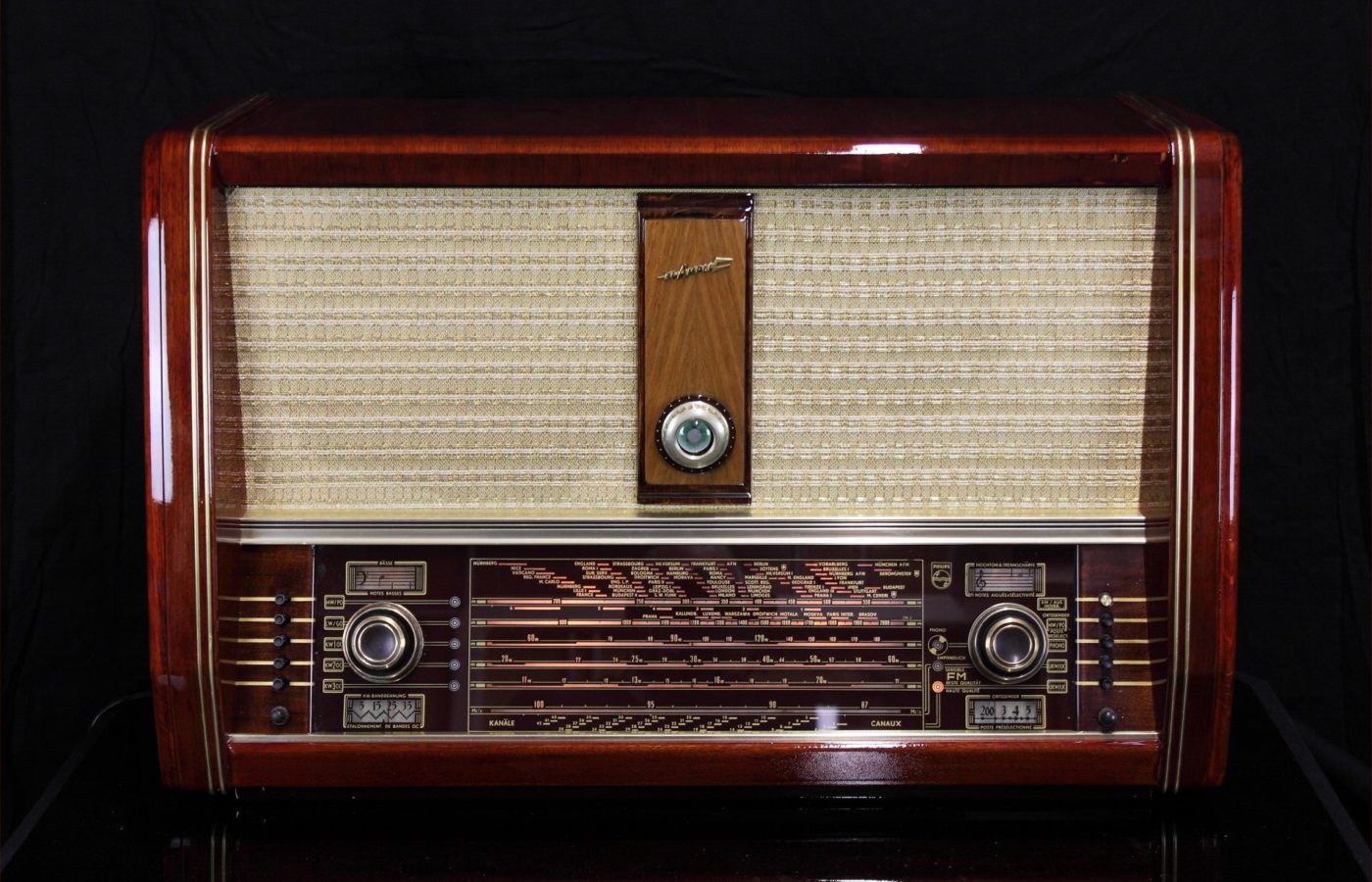
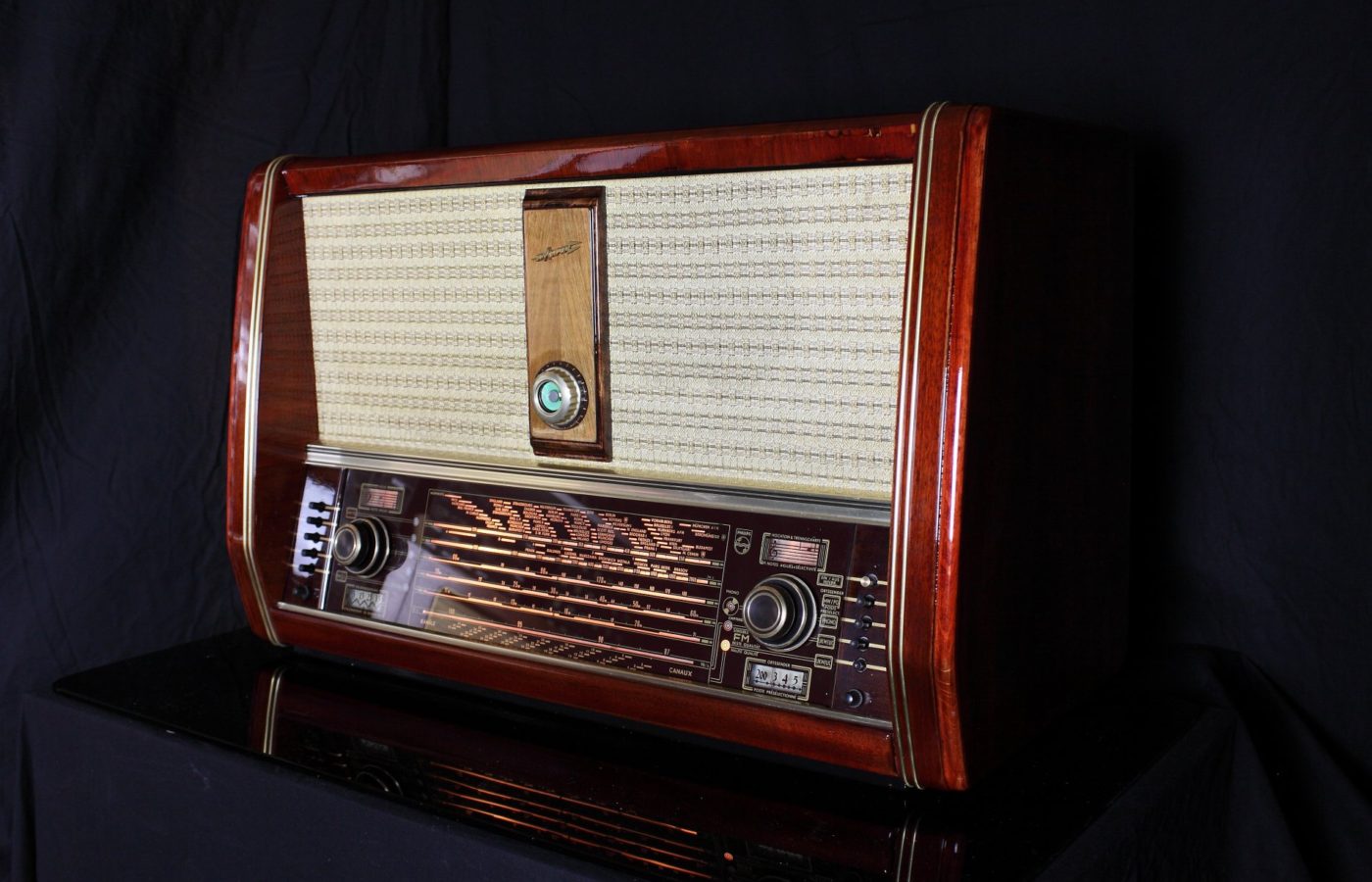






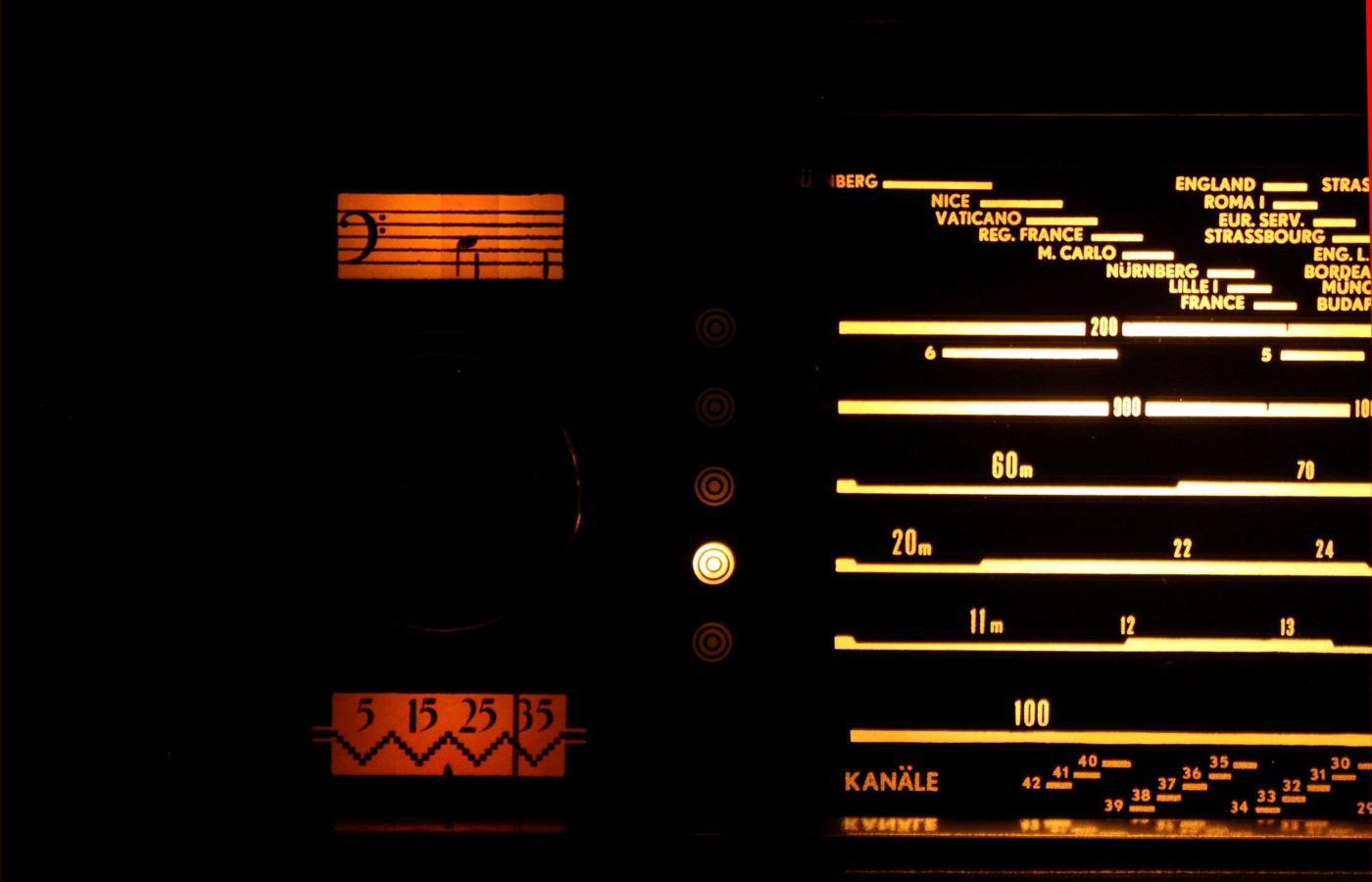





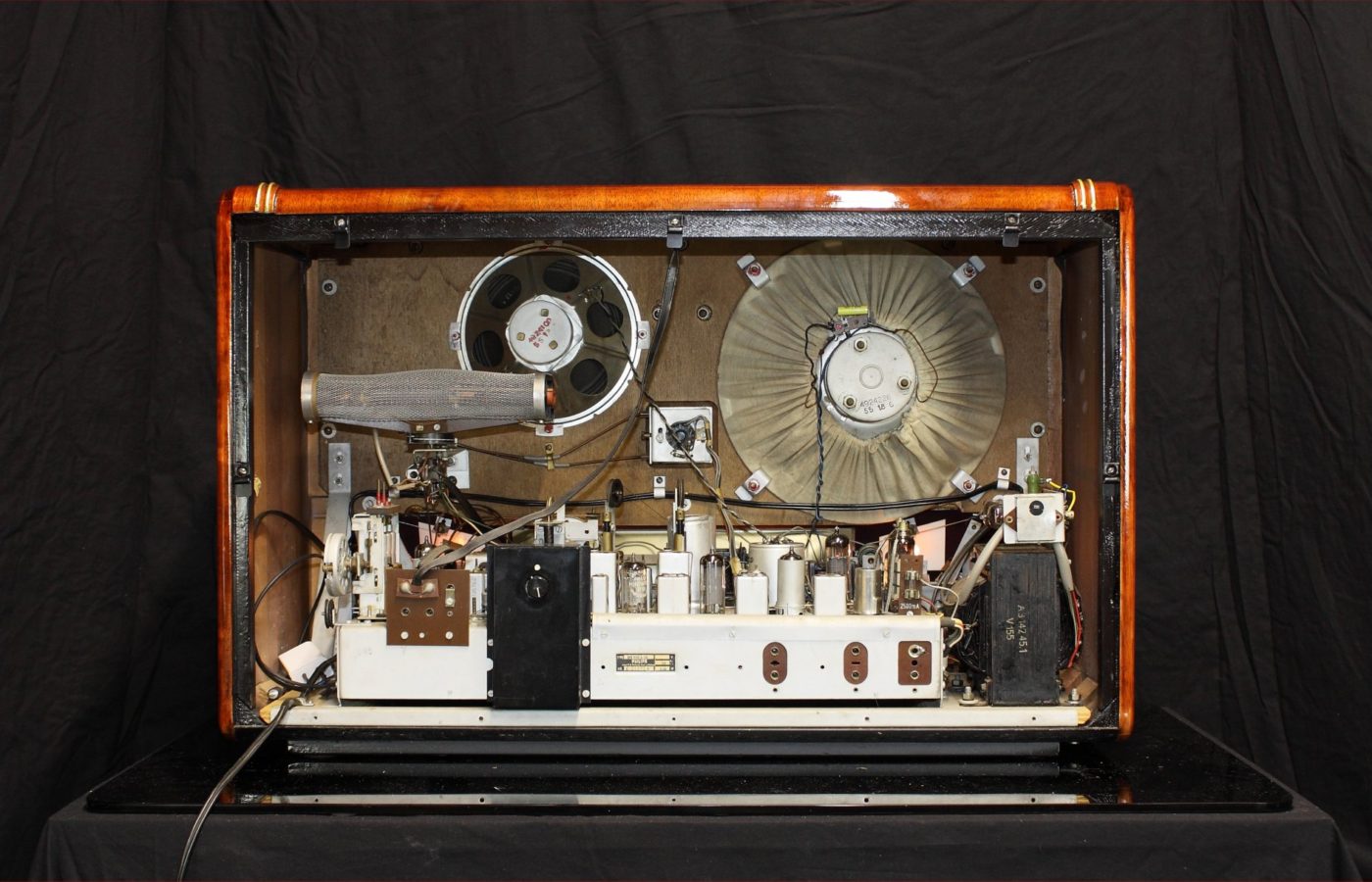


The Philips BX998A is the largest and most important radio a valvole device ever built by Philips.
It appears clear that only the performance and exclusivity required by the public to whom such device was addressed were taken into account in the design. There is no other commercial radio built in Europe which is equipped with 16 valves, some of which are double, for an equivalent of 22 single valves.
As I had the opportunity to discuss in the past with some lucky owners of this device, some valves could be saved, reducing the overall price of the device, but, clearly, the price was not the problem, on the contrary.
The Philips BX998A is equipped with some special features that make it exclusive in the context of European production of the time. These are:
- Motorized band selection
- Separate amplifiers for treble and bass
- Ironless Amplifier for the Bass (OTL)
- Double FM band with high and low sensitivity/quality
- Double Medium Wave band to store two simultaneous stations
- Two of the three shortwave bands with separate fine tuning
- High damping with feedback circuit
- High impedance woofer
All these precious things are analyzed in detail in the next page, so I won't talk about them here, in the general description.
The Philips BX998A has considerable dimensions with a front of 71 cm in width and 44 cm in height. The friezes of pure brass and the wooden surfaces of different colors significantly reduce the frontal impact of the cabinet, making it pleasant. The overall design is however the most classic and conservative that could be found at the time. Also in the design the orientation of the project to an audience of a specific social class is evident.
The bass are really deep. This is determined by the separate OTL amplifiers and the 26 cm diameter big woofer.
The excellent 17 cm diameter dual-cone mid-tweeter reproduces the medium and high range very softly.
The arrangement of the speakers favors frontal listening.
The High and Medium Frequency sections.
The FM group has high amplification and stability.
The FM Haute Qualité band is equipped with a automatic noise reduction in the presence of signals below 1.7 uV, the output is muted to avoid rustling and noises when searching for stations.
The deenphasis circuit is set to 50 uS, valid all over the world except for the USA and South Korea. In these countries the filter must be brought to 75 uS.
The AM section is equipped with an orientable antenna for the OM and OL bands. It can be controlled by the crown that surrounds the magic eye on the front.
The medium frequency sections are composed of 9 separate filters for AM and FM. With these filters it is possible to precisely adjust the sensitivity, selectivity and intervention of the noise suppressor.
The listening lacks the nervousness in the trebles which is necessary for the reproduction of Jazz, Rock and post Rock music. In fact, this radio is particularly suitable for listening to symphonic, lyrical and baroque music. The great choirs are expressed with incredilbe dynamism but, at the same time, the madrigal is reproduced with the necessary precision.
But what surprised me was listening to the bordone in Wagner's prelude to "Das Rheingold ". It is unlikely that a radio could do better with these musical genres.
The tracks chosen for the listening are dedicated to Dutch artists, such as the manufacturers of this device.
The first track is Pieter Bustijn's Suite N.6 in A min – Giga.
Pierre Bustijn (1649-1729) was a Flemish composer. Harpsichordist, organist and music box player.
Only his 9 Cembalo Suites survived the destruction of the Middelburg Archive during the Second World War. Almost nothing is known about him, but his nine harpsichord Suites were very popular at the time.
Bach's influence pervades the suites both in their melodies and in their form, clear in their elegant construction.
The second track, by Jan Pieterszoon Sweelinck, is taken from the 2012 KoninginnedagConcert requested by Queen Beatrice for the 450th anniversary of the composer's birth. Sweelinck studied with Gabrieli during his stay in Venice. Andrea Gabrieli (Venice 1510-1586), singer in San Marco, composer of madrigals and musics for triumphal occasions, such as the victory of Lepanto on 7 October 1571.
Sweelinck's great ability was to merge and renew the English counterpoint forms with the choirs of the Italian and German schools.
The reverberations and depth of live recording are noticeable when listening to the file.


![]()
The third track is dedicated to a Dutch harpsichord maker, Willem Kroesbergen.
It is a work by Bach, English Suites, interpreted by Masaaki Suzuki with a harpsichord built by Kroesbergen.
The harpsichord is the largest pluck and keybord instrument. It is used a lot in Baroque music as a continuum performer to build a solid sustenance plot for the piece. The sound is bright and full of harmonics.
Flanders were one of the most important harpsichord production centers. The instruments built by Kroesbergen are regularly used by soloists such as Ton Koopman and Masaaki Suzuki and by groups such as the Bach Collegium Japan and the Musica Antiqua Köln.
The fourth track is the Symphony No.1 "Pan" (1917) by Willem Pijper (1894-1947).
Of humble origin and self-taught, he was a pupil of Johan Wagenaar. He became director of the Rotterdam Conservatory, where practically all the Dutch composers of the 1900s were educated.
He was influenced by Mahler, Fauré, Debussy, up to evolve his research to contemporary music, inspired by Stravinsky and Schönberg.
The chosen track is taken from his first symphony, close to the Mahlerian symphonies. Pijper's later works will be very different.
The last song is by singer Anouk Teeuwe. The song is titled Nobody's Wife. Anouk is an award-winning Dutch singer, born in Den Haag in 1975. Her songs are of good quality, a pure and classical rock that is best expressed in concerts.
In 1891, the brothers Gerard and Anton Philips, started to produce the first incandescent bulbs in Eindhoven.
Later, Philips specialized in the production of electro- medical equipment, and in 1918 introduced the first X-ray tube.
In the following years, Philips began specializing in the broadcasting industry. In 1932 the company succeeded in selling over one million radio equipment and became the world’s first producer.
During the Second World War, Philips transferred to the Netherlands Antilles, and returned to the Netherlands at the end of the conflict.
In the second post- war period, began the production of the first televisions, then the launch of the music cassettes in 1963 and the production of the first integrated circuit in 1965.
In 1982 Philips launched with Sony the first compact disc player.
In 1984 Philips acquired the control of the German Grundig.
In the 90's Philips faced a financial crisis.
In 1991 it inserted on the market the Video CD and it is one of the first companies in the world to develop high definition television.
In 1999 Philips established a joint venture with LG Electronics, named LG Display, which ends in 2009.
In 2006 together with Sony launched the first Blu-ray.
In 2009 Phillips launched the first full-HD LCD TV in 21:9 format.
Phillips holds 48,000 registered patents.
Currently, the production is focused on low- energy lighting products and LED systems and services for diagnostics and production of medical devices.
Year of production: 1955
Superetherodyne IF 452/10700
9 AM Circuits
11 FM Circuits
Wavebands::
Long Wave (150-345 KHz)
Medium Wave 1 (517-1620 KHz)
Medium Wave 2 (517-1620 KHz)
Short Wave 1 (1,6-5,2 MHz)
Short Wave 2 (5,1-15 MHz)
Short Wave3 (14,7-26,5 MHz)
FM 1 (87,5-100 MHz)
FM 2 (87,5-100 MHz)
Loudspeakers:
1 woofer
1 mid-tweeter
Dimensions (LHP): 710 x 440 x 317 mm / 28 x 17.3 x 12.5 inch
Net weight: 28,1 kg / 61 lb 15.9 oz
16 Tubes: 2xEBF80, ECH81, EF80, EC92, EM34, EF89,EF85, EAA91, ECC83, EBC41, 2xPL81, EL84, 2xEZ80


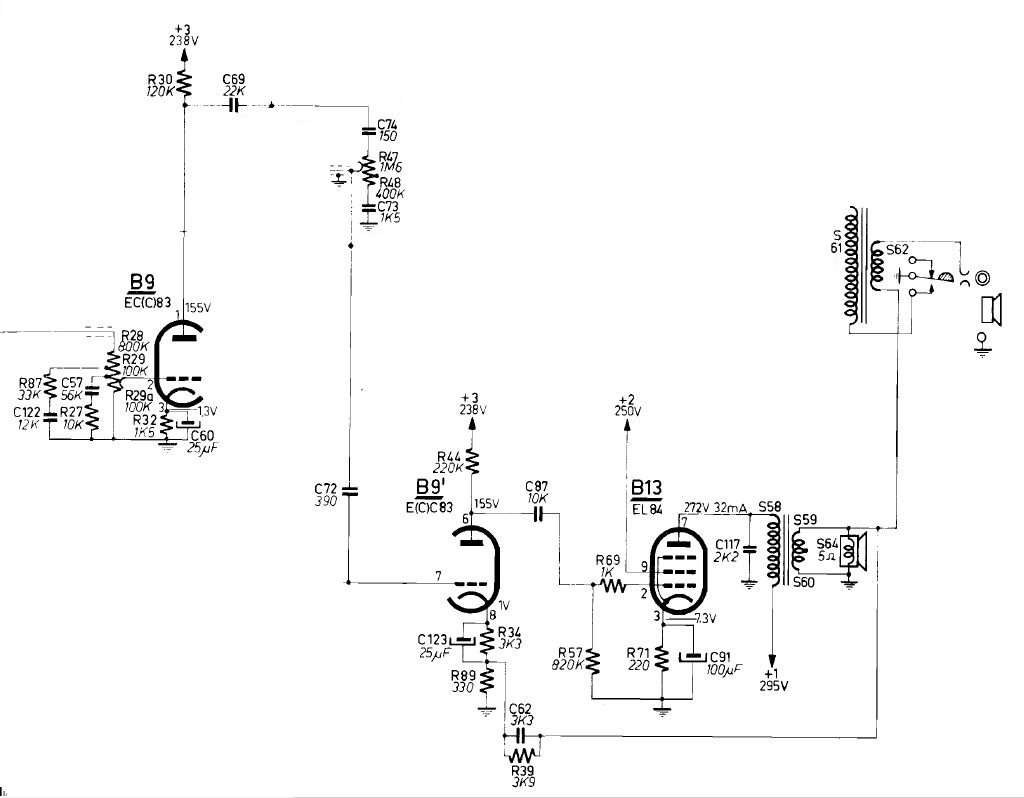
The output stages are two, distinct, one for low and one for high frequencies.
The first stage of the preamplifier is unique and drives both the output stages. It consists of a section of the ECC83 double triode.
On this section is the volume control with two physiological corrections of the frequency response (loudness). At the output of this section are the two Baxandall type tone controls. At this point the bass and trebles are divided.
The bass tone amplifier is of the SRPP (shunt regulated push pull) type, with no output transformer (known to be the critical point of the stadio finale).
This configuration is still used today in some HIGH-END voltage amplifier.
The output transformer limits the frequency response of the entire amplifier. The bass are limited by the primary winding inductance.
The two PL81 output tube of each channel are connected in series with DC-DC coupling. Each PL81 is configured as a triode.
The output is taken from the cathode of the first PL81. The speaker has an impedance of 700 ohms, identical to the average impedance that occurs on the cadhode, so direct coupling (without transformer) between the output stage and the speaker is possible.
Therefore, the Philips BX998A is totally free from all the problems deriving from the output transformers.
This amplifier controls a 26 cm woofer.
The treble amplifier consists of the second section of the ECC83 double triode and a output pentode, EL84, configured in class A.
The output transformer in this circuit has no critical issues anymore since it cannot be saturated by low frequencies. Moreover, this is a high quality transformer, with the winding layers alternating between primary and secondary.
Finally, the damping of the speaker is kept high by the low dynamic resistance of the feedback circuit.
This amplifier controls a 17 cm Mid-Tweeter.
Another feature of the Philips BX998A is the motorized band selection.
On this radio you can hear from nine different possible origins.
Long waves, two bands in medium waves, three bands in short waves, two bands in FM, auxiliary input (Bluetooth).
Given the mechanical complexity, and therefore the fragility, that would have been necessary to build a band selector suitable for Philips, they decided to divide the selector into two separate selectors, one rotating and one slide. The two selectors are mechanically connected to each other.
The rotating switch is operated by a motor which, thanks to a series of switches and cams, rotates the selector to the position determined by the band button that has been pushed.
This mechanism ensures regular rotation and protection of the contacts for a long time.
Of course, the mechanism must be cleaned and lubricated from time to time. Regular maintenance should be done at least every 10 years.
I understand that we live in an era where an 8-month device is considered obsolete, but for these machines it is not like that.
During the rotation of the motor, a Muting circuit start, therefore no annoying noise is reproduced on the speakers.
调谐指示当然已经被更换

Two speakers are used in this device:
Philips 9758A
Woofer
Diameter 26 cm/10.2"
Frequency response 45-10.000
Impedence 700 ohm
Philips 9768M
Mid-Tweeter doppio cono
Diameter 17 cm/6.7"
Frequency response 95-15.000
Impedence 5 ohm
A connection with external 5 ohm speakers is provided, however leaving all the other speakers active.

2 - MW1 button
3 - LW button
4 - SW1 button
5 - SW2 button
6 - SW3 button
7 - Fine Tuning knob for SW2-SW3
8 - Bass display
9 - Bass knob
10 - Loudness knob
11 - Fine Tuning display for SW2-SW3
1 - ON/OFF switch
12 - Treble display
13 - Treble knob
14 - Tuning knob
15 - MW2 display
16 - MW2 button
17 - AUX button
18 - FM1 button (High Sensibility)
19 - FM2 (High Quality)
20 - MW2 knob
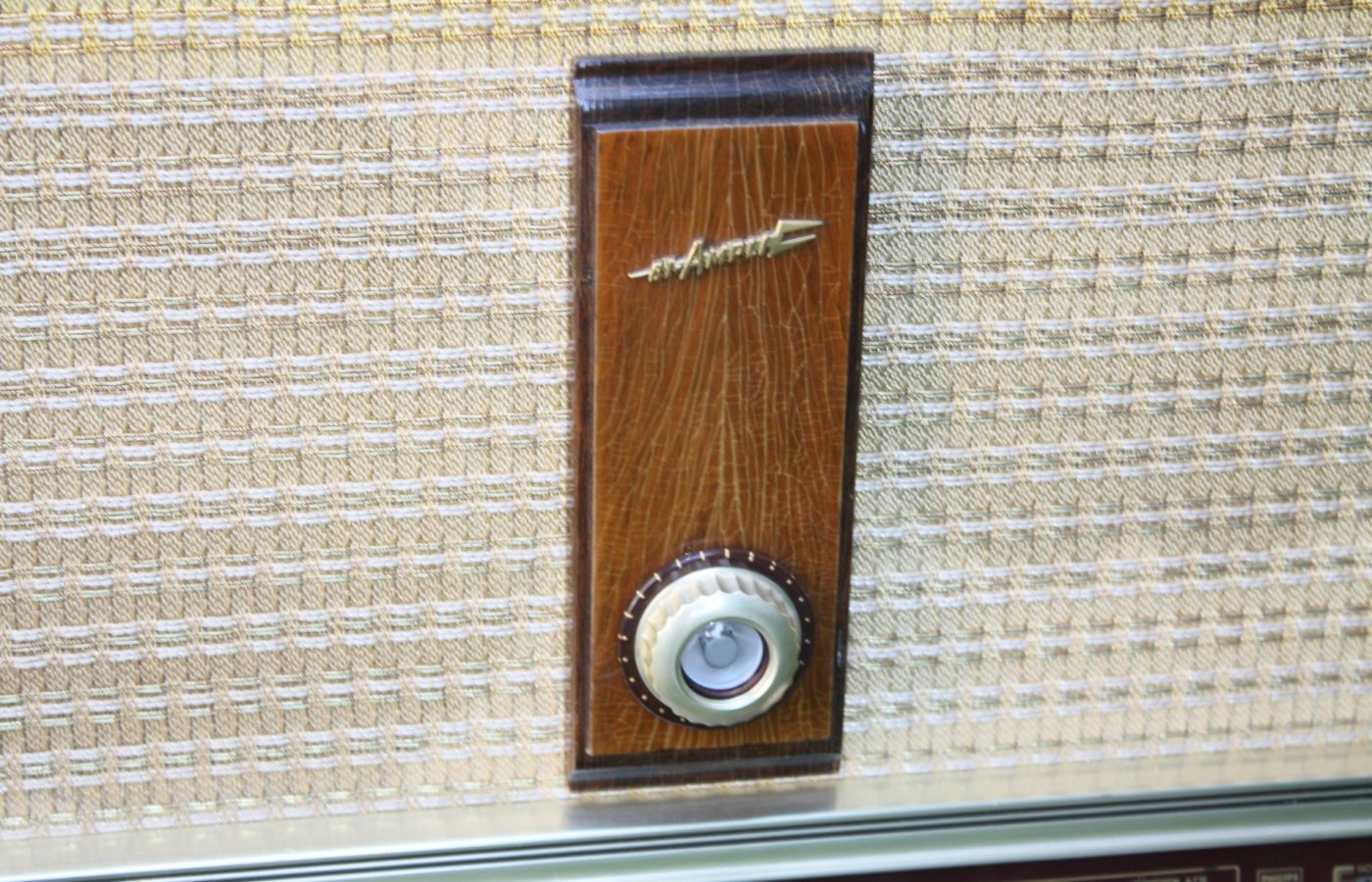

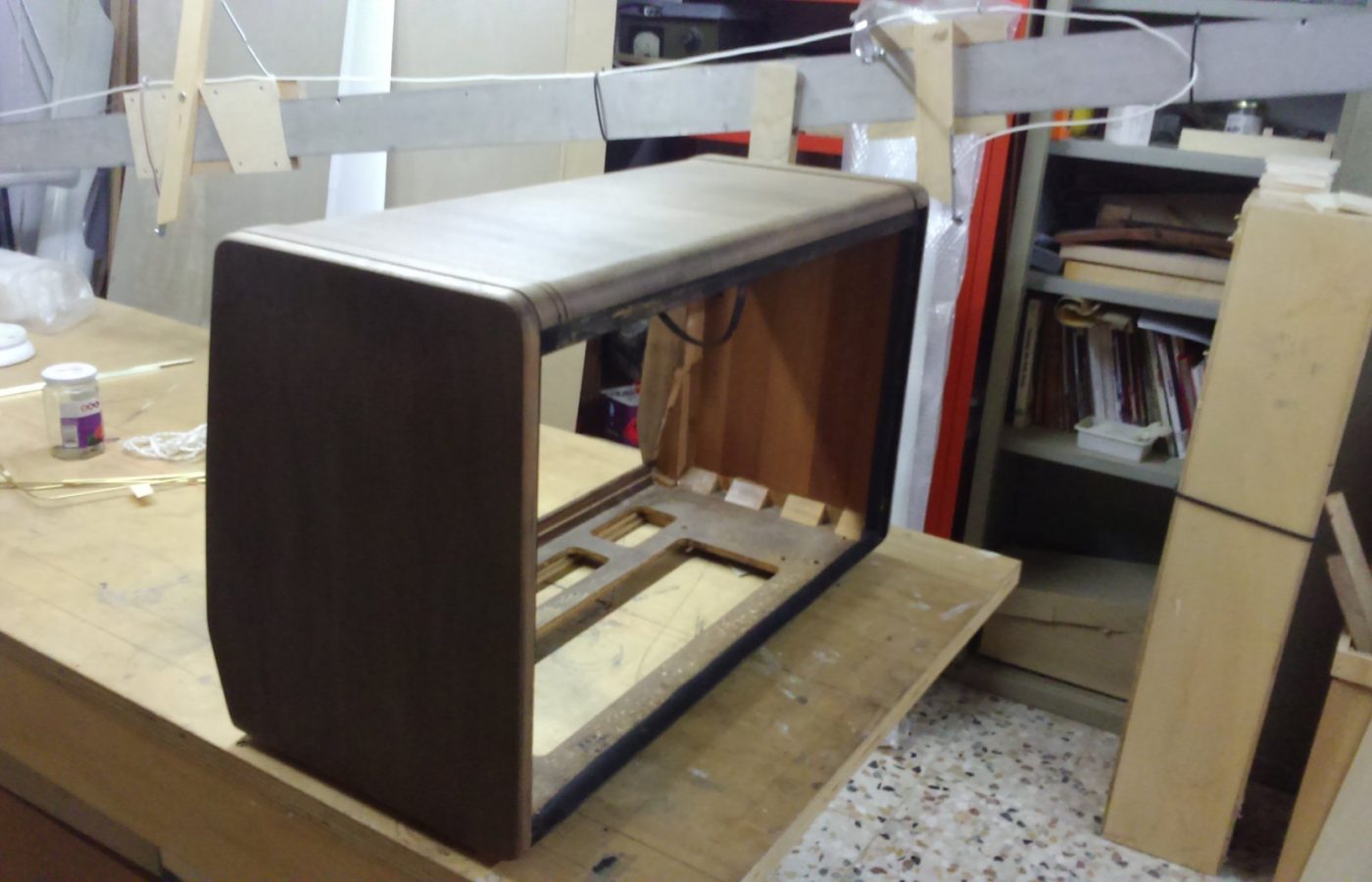


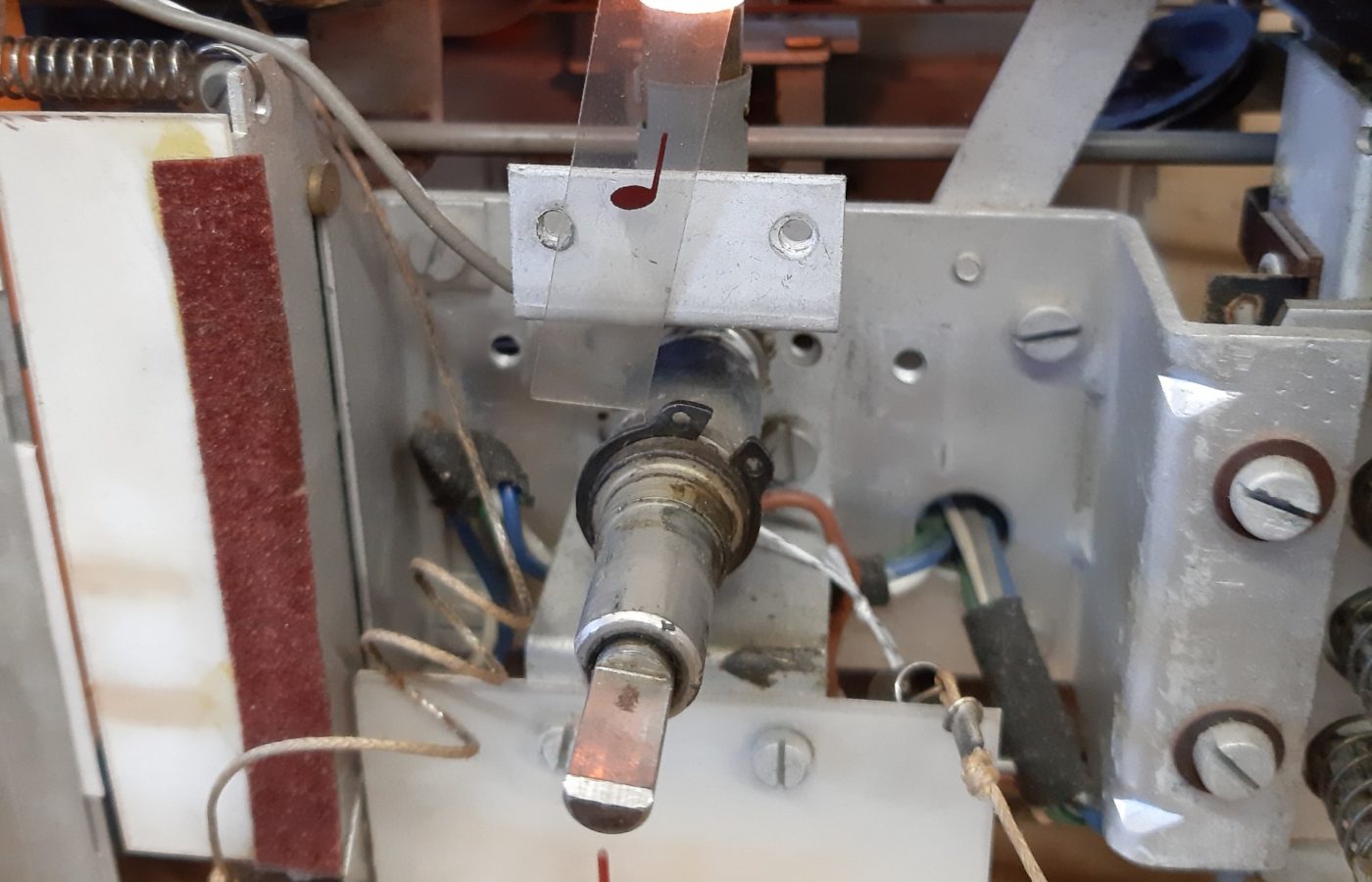
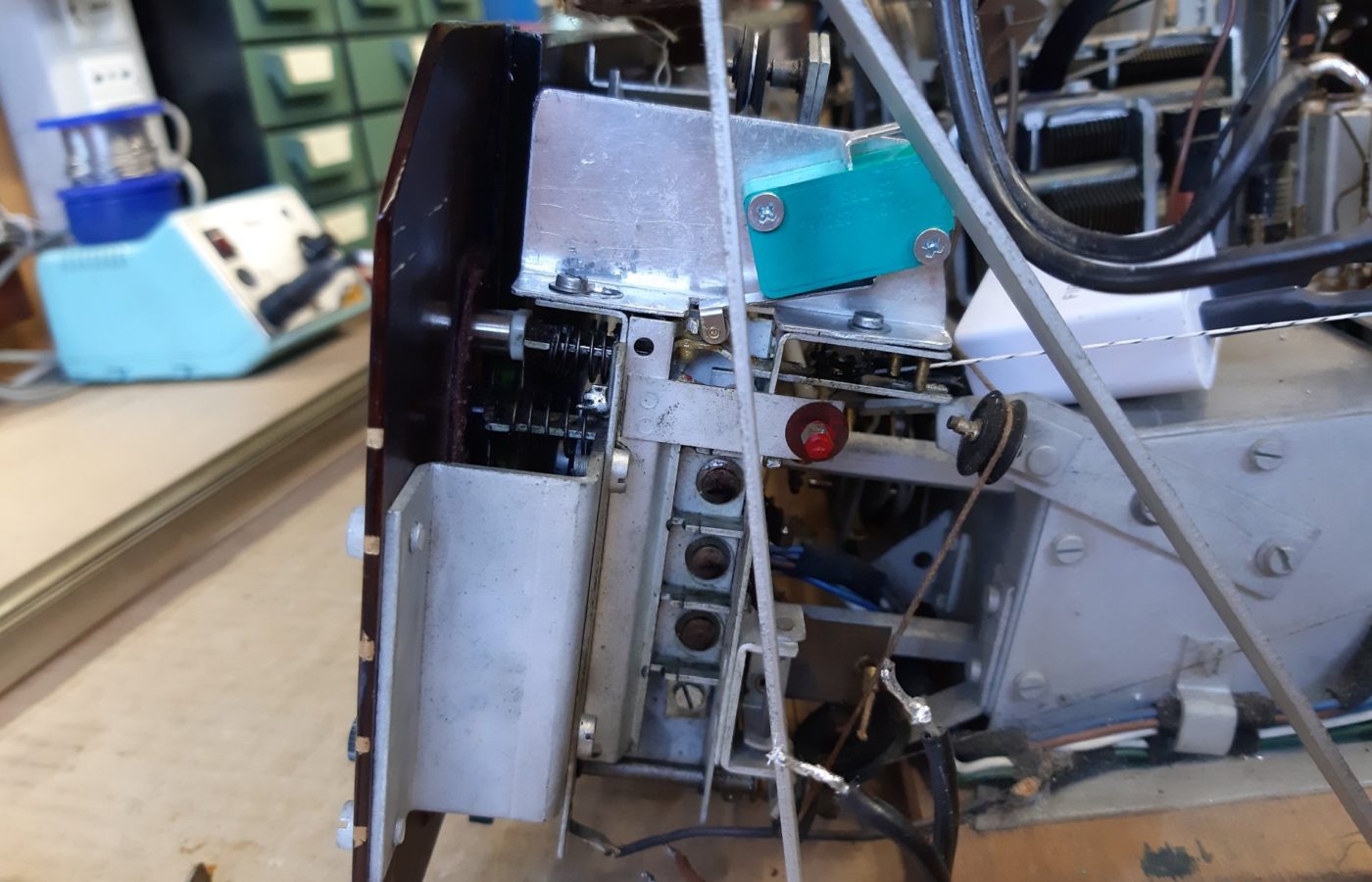




 capella 753 - cn
capella 753 - cn
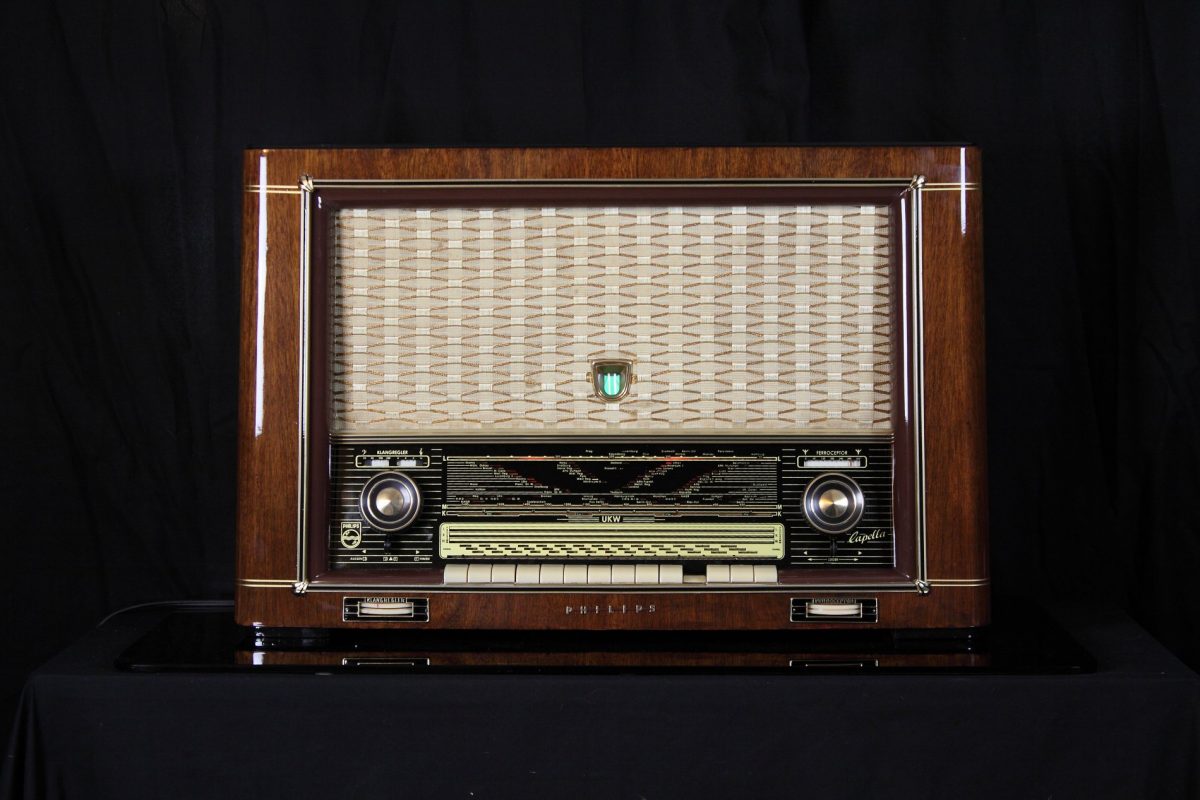






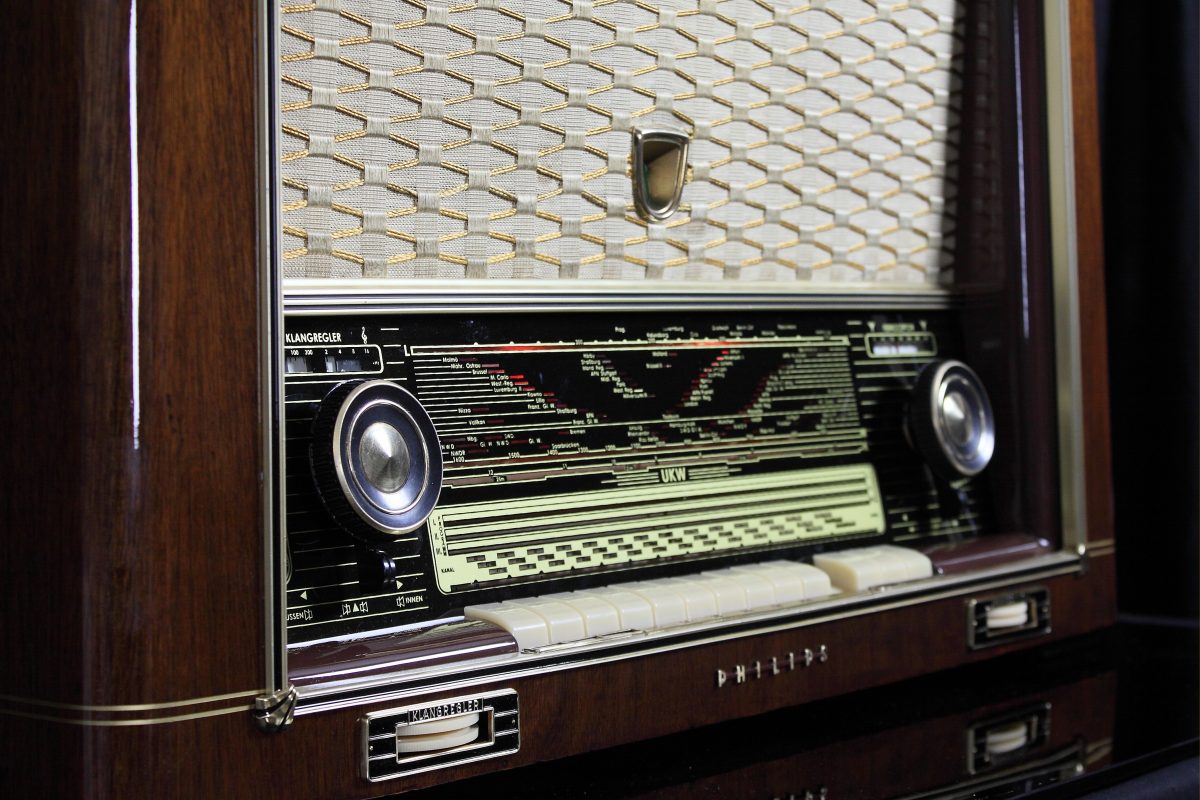
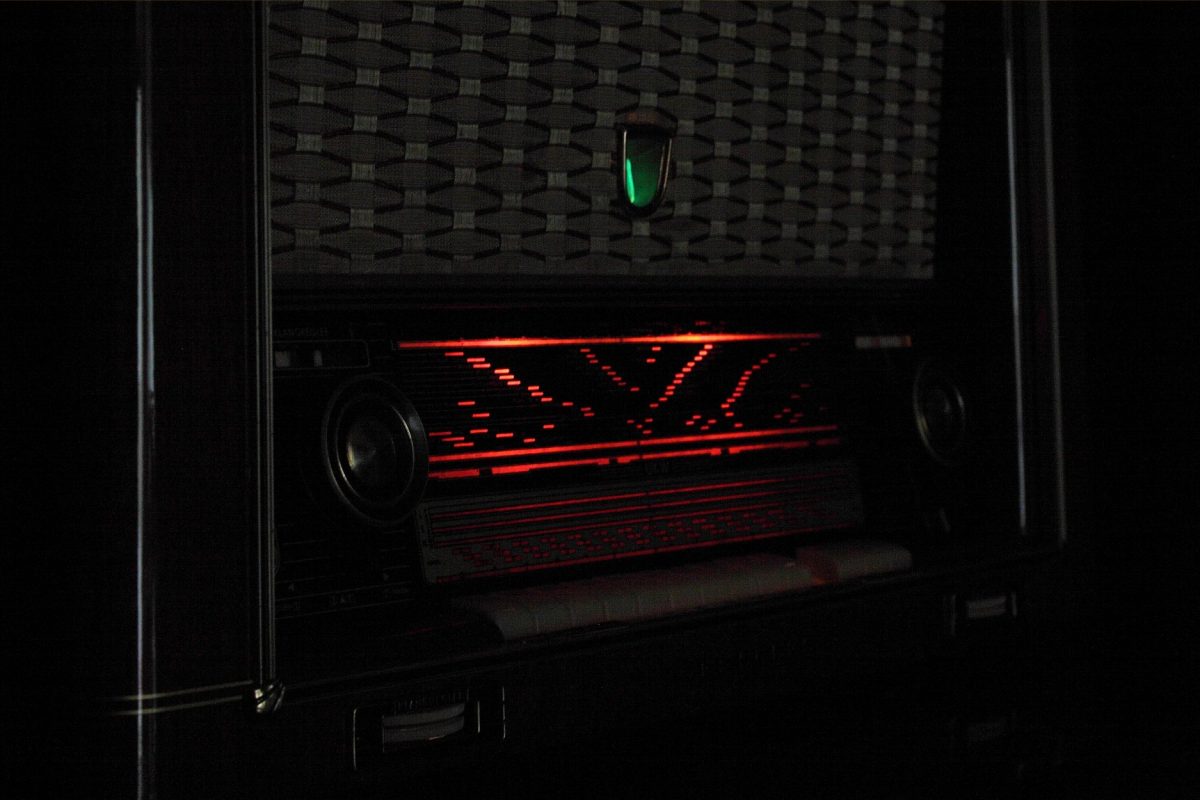

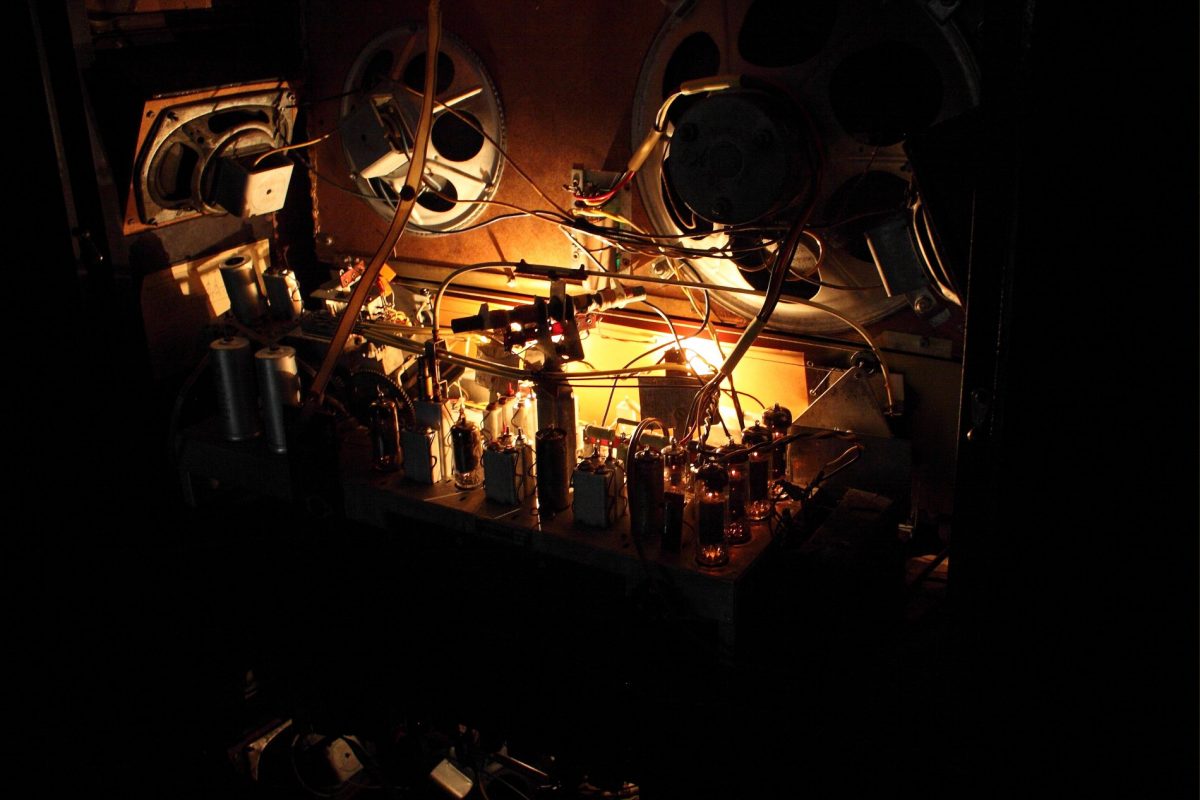
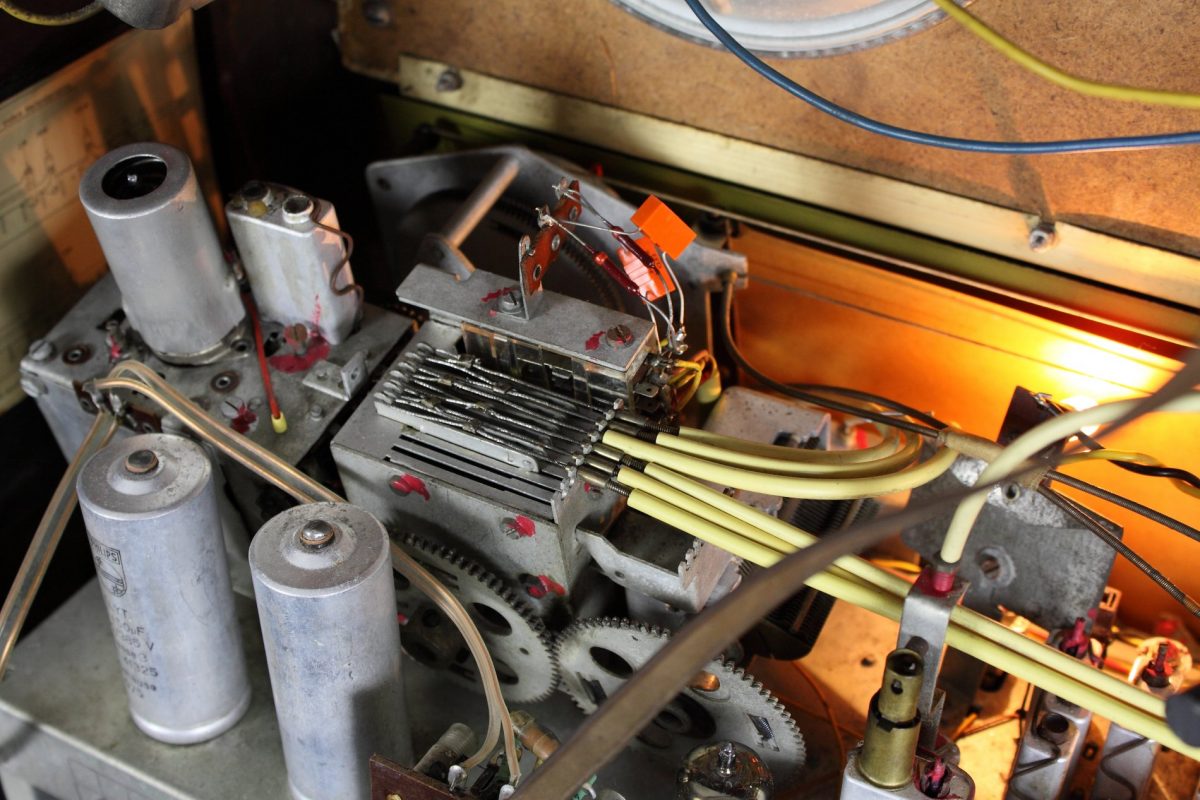


The Philips Capella 753/4E/3D was the company’s flagship model back in 1955, but in reality, the brand was working towards making it the best piece of technology to come out of Germany, blowing away the competition.
As a matter of fact, they met their goal and produced a unique piece of technology, for both the German and World Wide market.
It’s peculiarities are:
Even though the Philips Capella 753/4E/3D boasts a noticeable size, it’s woodwork, frames, and speaker covers contribute in giving it a much sleeker, eye-pleasing look to complete any furniture display.
The Low frequencies are particularly deep thanks to the separated OTL amplifiers and to the impressive size of the subwoofer, approximately 26cm in diameter (more or less 30 inches).
I suggest making good use of the mid-tweeter, as this successfully crafted speaker (17 cm in diameter) makes the mid and Hi frequencies pleasant and true to life, especially if seated in front of the Machine.
High and Mid Frequencies sections
The FM group is of the variable permeability type.
It has a high amplification and stability. Being equipped with an automatic noise suppressor in the presence of signals below 1.7 V, the output is muted to avoid hearing rustling and noise when searching for stations.
The de-emphasis circuit is set to 50 uS, valid all over the world except for the USA and South Korea. In these countries, the filter should be increased to 75 uS.
The AM section is equipped with a rotating antenna for the OM and OL bands. The antenna can be controlled by a knob on the front.
The mid-frequency sections are composed of three separate filters for AM and FM. The first of these filters is adjustable. The second is the amplifier filter and the third filter further increases the selectivity of the device.
The Motorized Tuning and the amplifier section are examined in detail in the following sections.
All the listed solutions translate into a very low distortion, an increase in power, and a pleasantness of use hardly ever obtained in other appliances.
This is the Philips Capella 753/4E/3D


Bluetooth receiver embed
Each radio is equipped with a cable for connection to any digital device.
- Bluetooth receiver embed - The unit is equipped with a BLUETOOTH receiver powered directly by the receiver power supply. This makes it possible to control the amplifier from any external digital device as an IPAD, a Smartphone, or a sophisticated multimedia station. So you can hear your preferred web station or your lossesless file without cables on the room. Wireless Receiver can be equipped upon requests.
– Multi Platform Connection – A customized adaptation cable to connect any digital device as Iphone, Smartphone, Laptop, CD Player etc. will be provided with this radio. This special cable suits the different impedances between the modern equipment and the receiver. Furthermore the two stereo channels flow into one without increasing the load to the input unit.
In 1891, the brothers Gerard and Anton Philips, started to produce the first incandescent bulbs in Eindhoven.
Later, Philips specialized in the production of electro- medical equipment, and in 1918 introduced the first X-ray tube.
In the following years, Philips began specializing in the broadcasting industry. In 1932 the company succeeded in selling over one million radio equipment and became the world’s first producer.
During the Second World War, Philips transferred to the Netherlands Antilles, and returned to the Netherlands at the end of the conflict.
In the second post- war period, began the production of the first televisions, then the launch of the music cassettes in 1963 and the production of the first integrated circuit in 1965.
In 1982 Philips launched with Sony the first compact disc player.
In 1984 Philips acquired the control of the German Grundig.
In the 90's Philips faced a financial crisis.
In 1991 it inserted on the market the Video CD and it is one of the first companies in the world to develop high definition television.
In 1999 Philips established a joint venture with LG Electronics, named LG Display, which ends in 2009.
In 2006 together with Sony launched the first Blu-ray.
In 2009 Phillips launched the first full-HD LCD TV in 21:9 format.
Phillips holds 48,000 registered patents.
Currently, the production is focused on low- energy lighting products and LED systems and services for diagnostics and production of medical devices.
Year of production: 1955
8 AM Circuits
12 FM Circuits
Wavebands:: LW, MW, SW, FM
Loudspeakers:
1 sub-woofer
1 mid-woofer
2 mid-tweeter
Operating voltage (CA): 110; 125; 220; 240 Volts
Dimensions (LHP): 700 x 455 x 275 mm / 27.6 x 17.9 x 10.8 inch
Net weight: 18 kg / 39 lb 10.4 oz
11 Tubes: ECC85 ECH81 EF89 EBF80 EM80 EABC80 EC92 EL84 UL84 EL84 UL84
Rotating ferrite aerial for AM bands
Ironless output



The preamplifier consists of two stages. At the entrance, the volume potentiometer is equipped with three sockets for physiological correction (loudness). The intervention curves are visible in the first graph.
Philips considers the frequency of 800 Hz to be the center of the audible band, so the treble and bass controls are calculated to enhance the frequencies above and below that value. The choice of this frequency is very important for the musicality and the pleasantness perceived by listening to the device.
In the second graph the frequency response of the preamplifier, with the tones enhanced to the maximum. You notice the different equalization you get by listening to the AM bands (Long Waves, Medium, Short) or listening to the FM band and PHONO.
The final stages are two distinct, one for the low frequencies and one for the high frequencies. These amplifiers control separate speakers, a 26 cm woofer for the bass and three speakers for mid/high frequency, with the 17 cm front speaker disconnectable for 3D effect.
The most interesting feature of these final stages is that they are without an output transformer.
The feature that makes this device very interesting is that each final stage uses a pair of EL84 / UL84 in an ironless configuration, ie without an output transformer (the known critical point of the final stage).
The output stage uses the operating principle called Shunt Regulated Push-Pull (SRPP) used today in HIGH-END amplifiers.
The output transformer limits the bandwidth of the entire amplifier. The bass is limited by the inductance of the primary winding, the treble is limited by the parasitic capacitance resulting from the alternation of the primary and secondary windings. The alternating winding of the primary and the secondary windings is also necessary to improve the coupling and thus reduce the dispersed flow.
The reduction of the dispersed flow increases the damping. This is essential in the loudspeakers mounted inside the cabinet of the radios, which do not work in hermetically closed boxes, and which are therefore free to move almost without resistance from the surrounding air.
The two output tubes (EL84, UL84) of each channel, four final valves in total, are connected in series with DC-DC coupling. Each UL84 is configured as a triode.
The output is taken from the cathode of the UL84. The speaker has an impedance of 800 ohms, identical to the average impedance that occurs on the catode, whereby direct coupling (without transformer) is possible between the final stage and the loudspeaker.
The Philips Capella 753 is therefore totally free of all the problems deriving from the output transformers.
The damping of the loudspeakers is kept high by the low dynamic resistance of the feedback loop.
Another feature of the Philips Capella 753/4E/3D is motorized tuning and preset memory.
Using 6 keys on the keyboard it is possible to memorize 3 FM stations, 2 in Medium Waves and 1 in Long Waves.
Pressing one of the storage keys via a cable pulls the lever H. The opposite side of that lever is pushed towards the disk R. This disk is divided into two parts with different diameters. Depending on how the disc is positioned, the lever H moves by activating a switch that turns the motor to the right or left until the lever H is fitted on the groove on the disc R. At this point, the motor stops. The R disks are rigidly connected to the axis A1 and through frictions to the R disk.
Tuning procedure
When a memory key is pressed, the motor will start to turn to the right or left according to the above.
Through the gears, Z1, Z2, Z4, Z5 the axis A1 is turned. Through the gears, Z6, Z7 the variable capacitor is rotated, which stops when the lever H engages in the groove of R.
To memorize a station, simply press the button on which it is to be stored, pull the tuning knob and turn it to the desired station.


The tones control system is very efficient.
Above the large tone control knobs there is two bands that lights up gradually indicating the emphasis on the band on which it acts.
The high-tone control knob is linked to two thin ropes. One of them is for the position indicator of the control itself, whereas the other changes the position of the ferrite in the MF transformers modifying the its curve.
By doing so high tones were attenuated/accentuated even before getting to the BF stage.

Bass at max - Treble at max

Bass at min - Treble at max

Bass flat - Treble flat

Bass at max - Treble at min

Bass at min - Treble at min

Inside the cabinet there is a dipole for FM reception and a ferrite rotating aerial for AM reception.
Ferrite aerial can be rotated from the outside to achieve a perfect tuning of the device in the AM.
In this picture see the rotation mechanism and the position indicator of the aerial.
The reception sensitivity with internal aerials is very good.
Using an external aerial sensitivity is further increased.
The magic eye has of course been replaced.

The 28 cm loudspeaker, with a 25 mm diameter magnetic core, is placed at the front.
A front 17 cm mid-tweeter can also be switched off if you want to increase the 3D effect.
On the two sides, there are two elliptical tweeters pointing upwards. Radiating to the ceiling of the room to take advantage of the reflections of the environment that add to the direct radiation produce an expansion of the soundstage.
There are no dangers of stationary wave due to the working frequency of these speakers.
There are several options for connecting external speakers.
It is, in fact, possible to connect an external woofer, excluding or not the internal woofer while leaving all the other speakers active.
It is possible to connect external medium-high units, excluding or not the internal mid-tweeters, while leaving the internal woofer active.
It is possible to connect woofers and external medium-high units, excluding or not all, or some, internal speakers.

In the center of the speaker panel is the Magic Eye which indicates the perfect tuning of each station.
KLANGREGLER - Low Tone Indicator (FA Key) and High Tone Indicator (SOL Key).
Just below we find the large Volume knob, with built-in automatic loudness correction.
Coaxially you can see the 3 position Speaker Selector Lever (External Only - Indoor + Outdoor - Indoor Only)
Below we find the two coaxial knobs arranged horizontally, which respectively command the Bass Tones and the Treble Tones.
In the middle, we see the dial scale of the AM bands on a dark background (Long Waves - Medium - Short) and the dial scale of the FM band on a golden background.
FERROCEPTOR - Indicator of the position of the internal ferrite antenna. This internal antenna (excludable with the HA key) is used in the OM and OL bands. The internal antenna must be rotated until the best tuning is achieved.
Just below we find the large knob of the Manual Tuning, whose movement is very pleasant being supported by a large flywheel.
ZEIGER - Coaxially you can see the drive lever of the Motorized Tuning. It can be moved in the two directions, to the left or to the right.
Finally, underneath again we find the Rotation knob of the Ferrite Antenna.
To store a station you must:
1 - press the desired memory key.
2 - Pull the tuning knob and tune to your favorite station.
3 - Release the tuning knob.
Under the dials, we meet a long series of 14 keys.
Starting from the left the keys have the following functions:
OL memory
OM1 memory
OM2 memory
AUS - Switch off
3D - Excludes Mid / Front Tweeter by increasing the three-dimensional effect of the sound
HA - Outdoor / Indoor Antenna for OM and OL
LW - Long Waves
MW - Medium Waves
KW - Short Waves
UKW - FM
FM1 memory
FM2 memory
FM3 memory

Output for external speakers.
Socket for recorder (tonbandgerat).
Turntable input (Tonabnehmer)
AM and FM aerial inputs and ground socket.
Be careful: Use ONLY 800 ohm loudspeakers
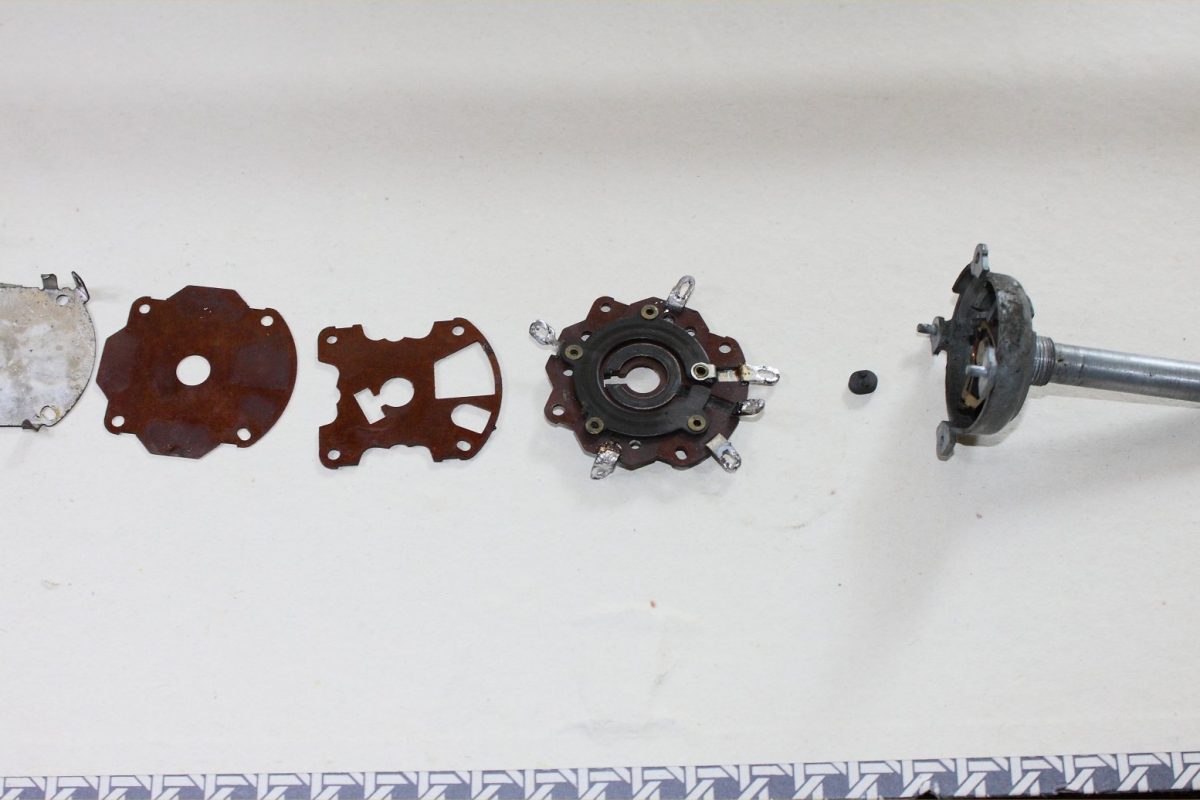



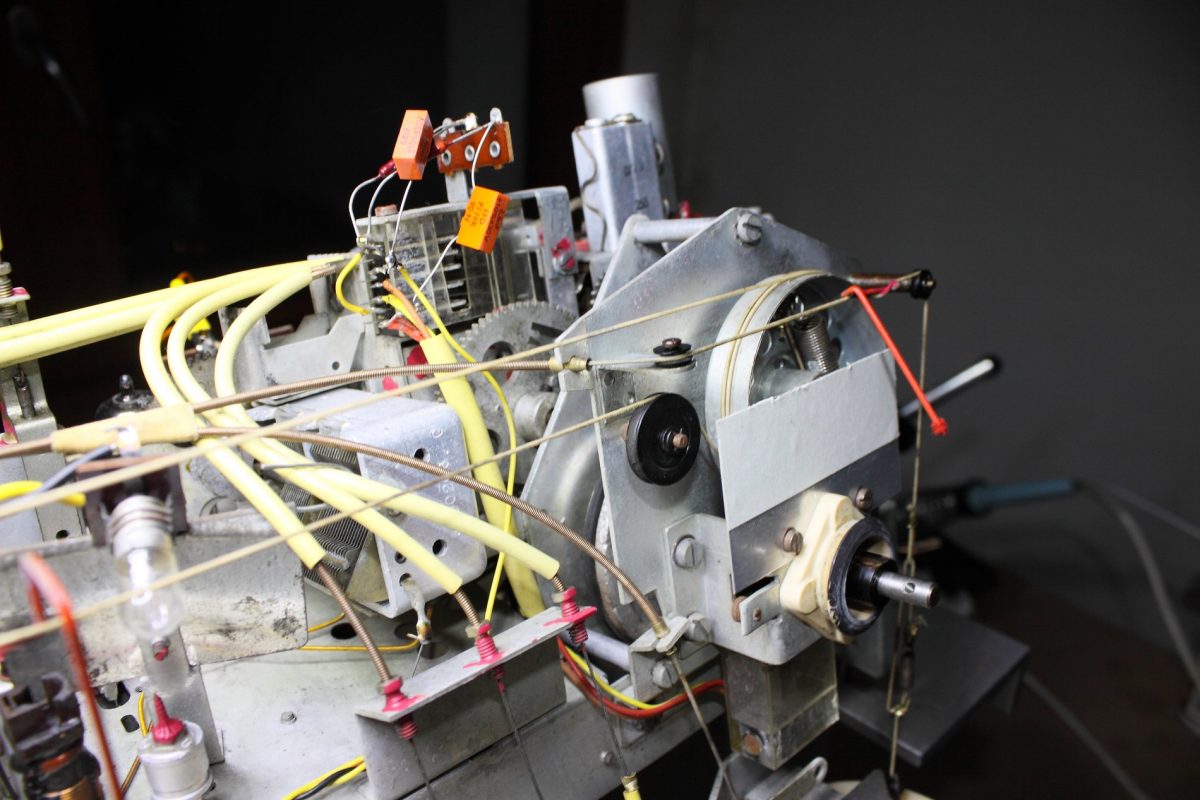

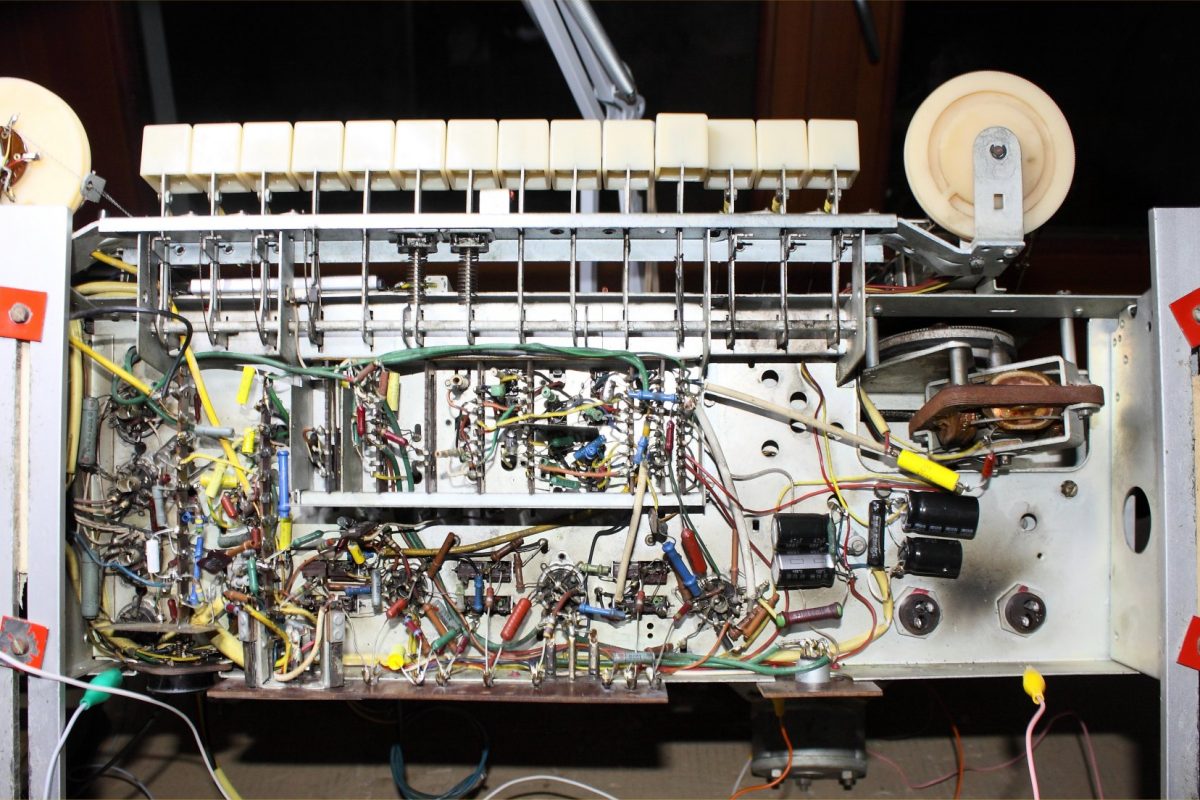


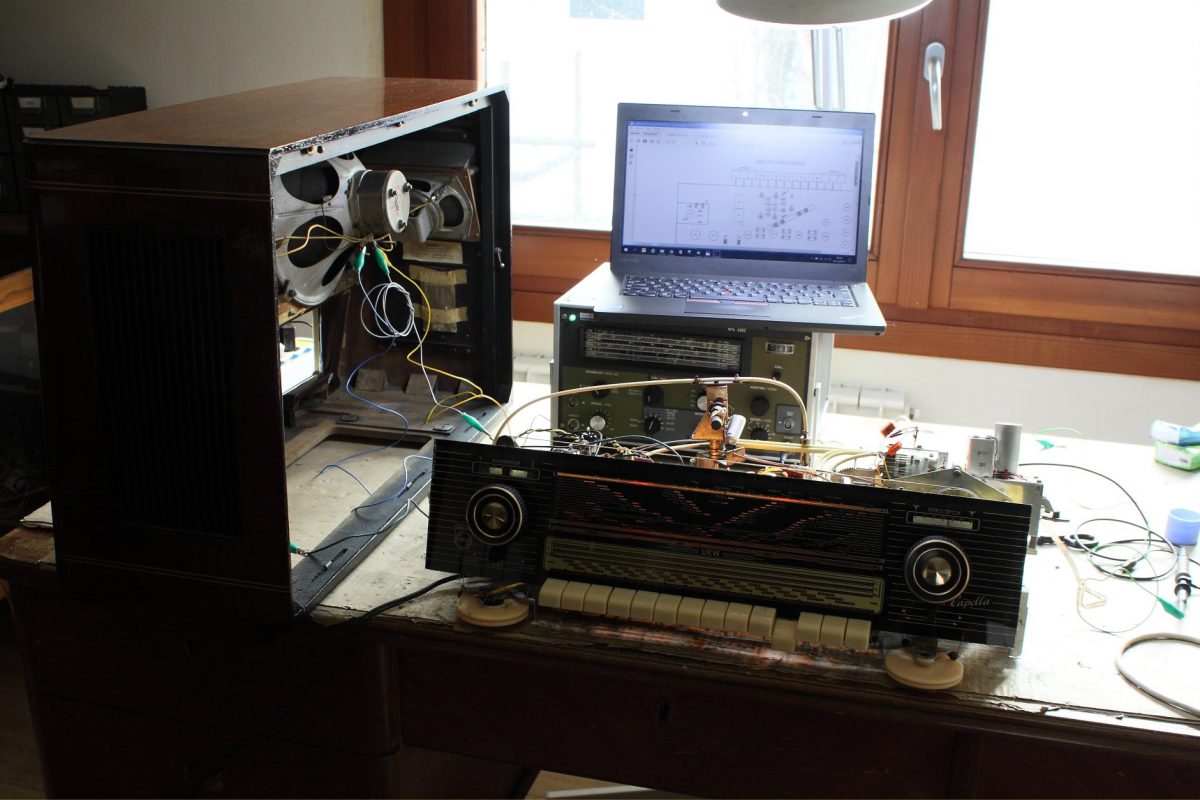

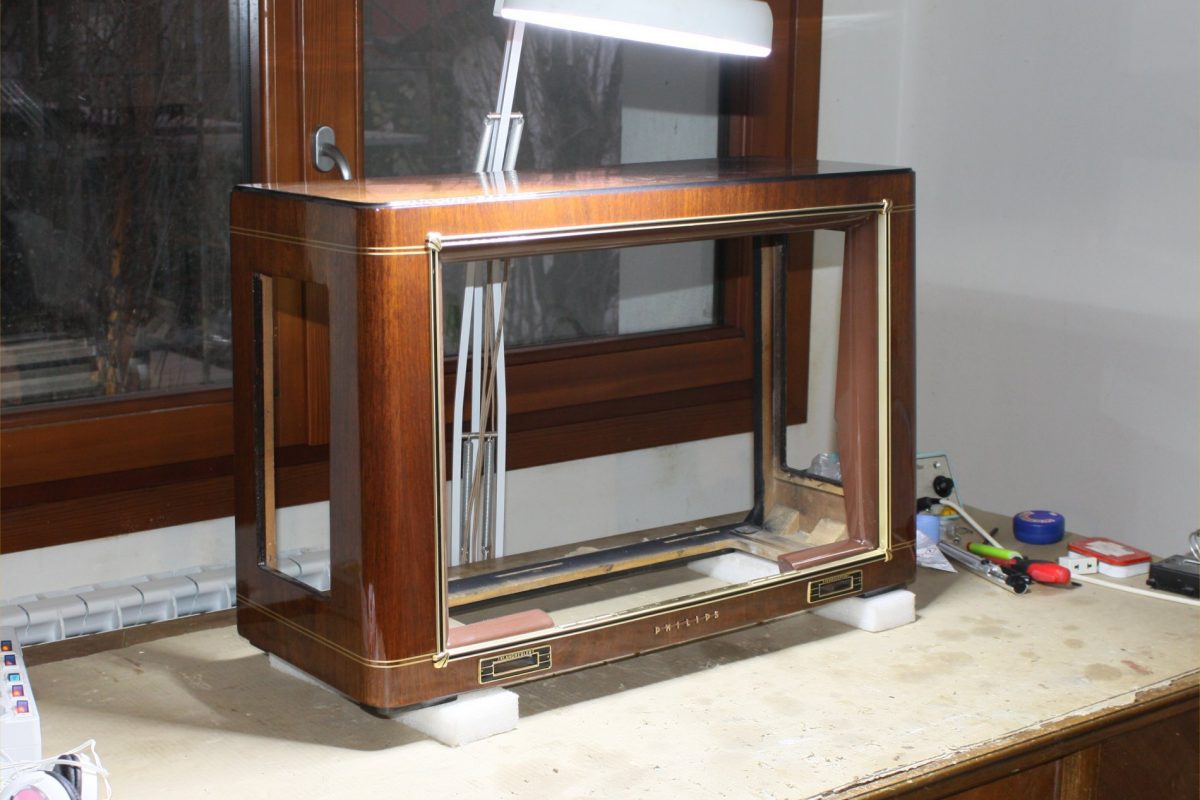
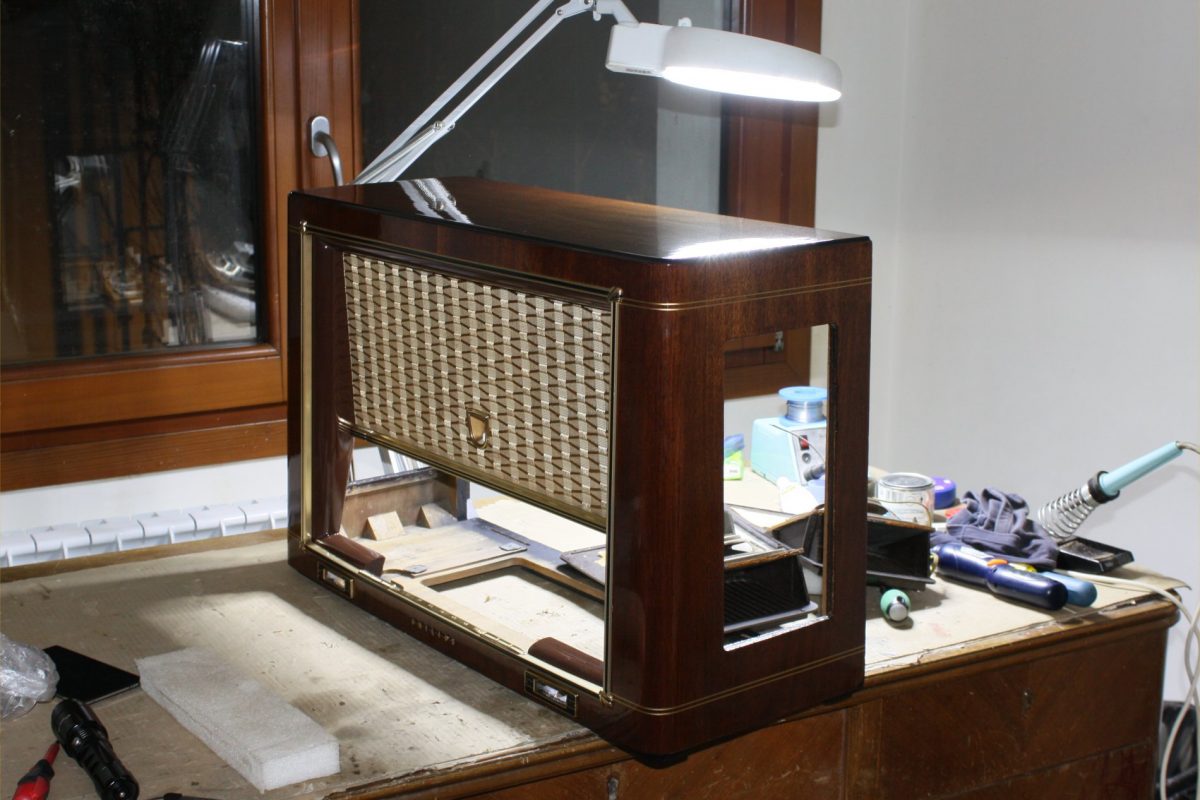



 philips - cn
philips - cn
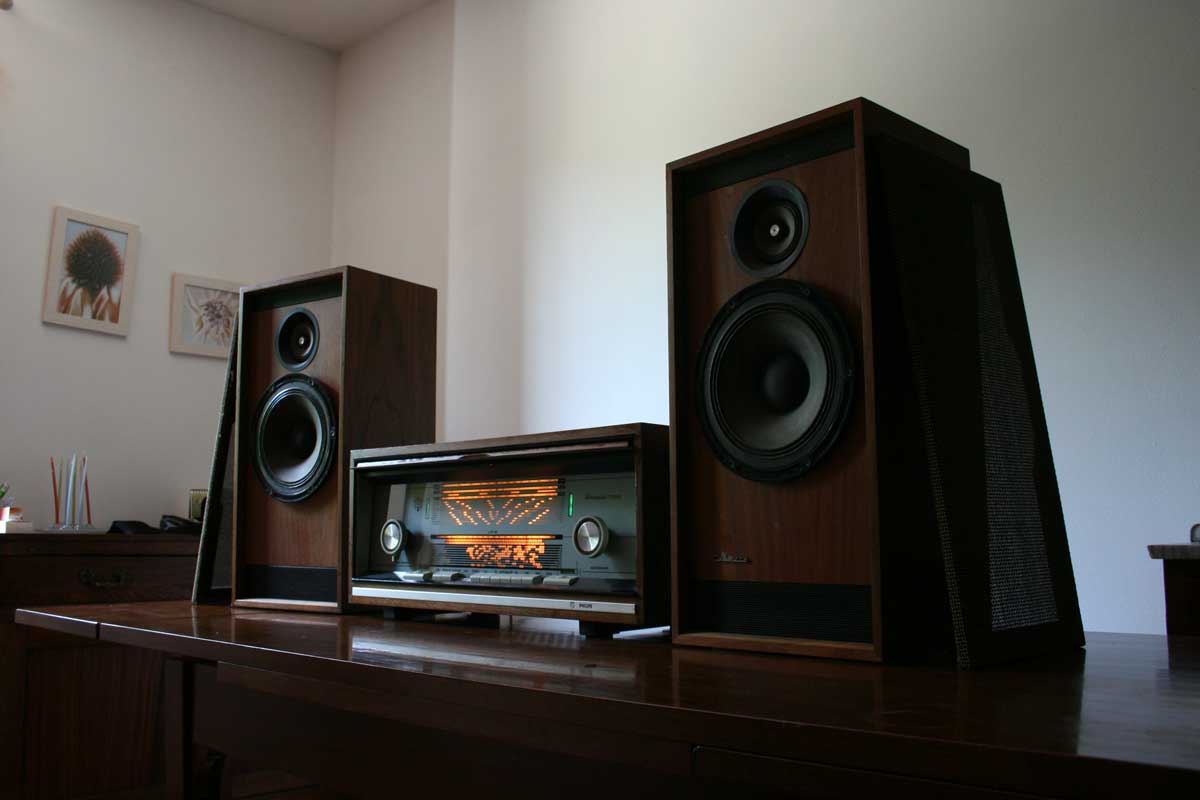




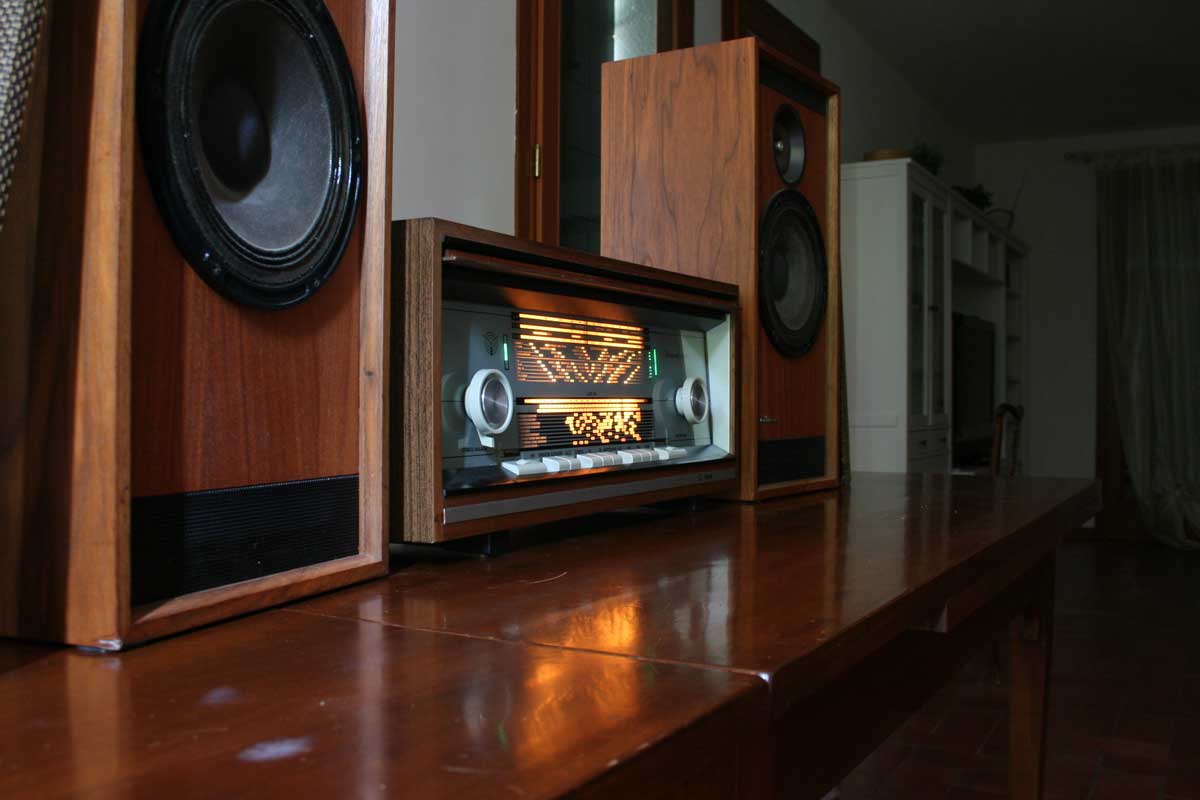


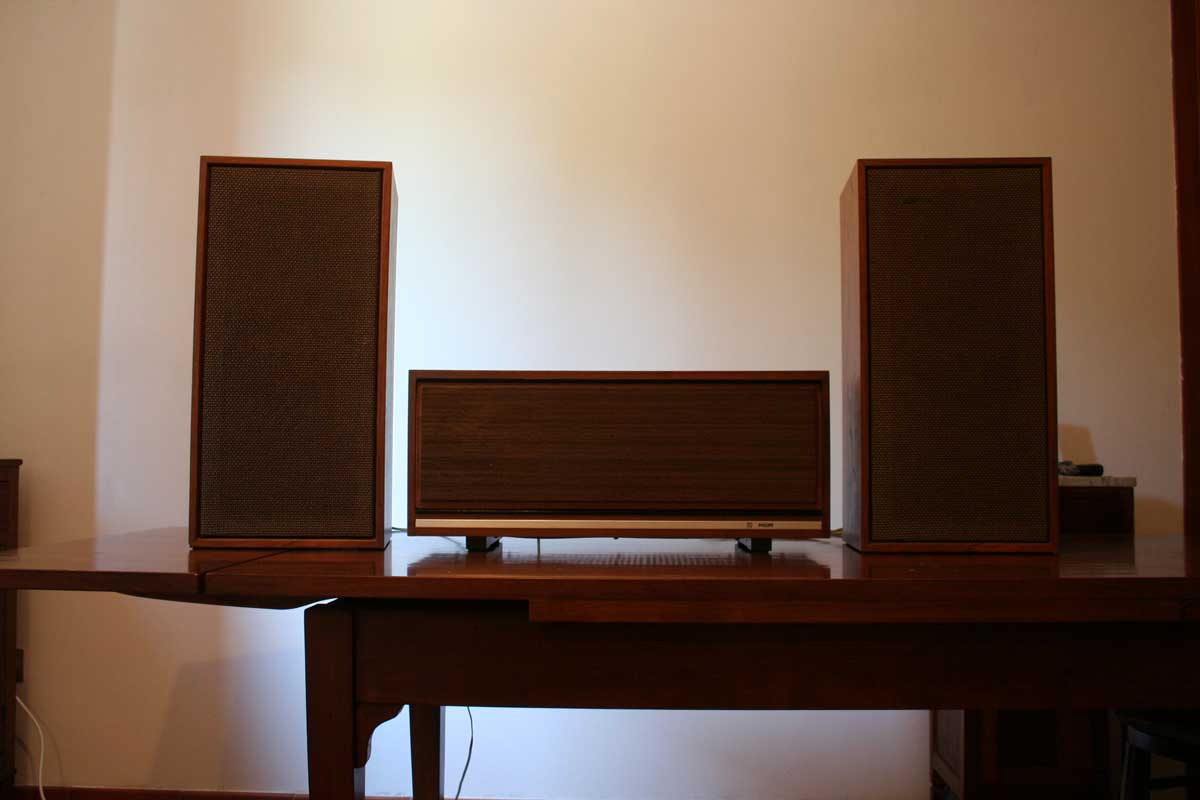

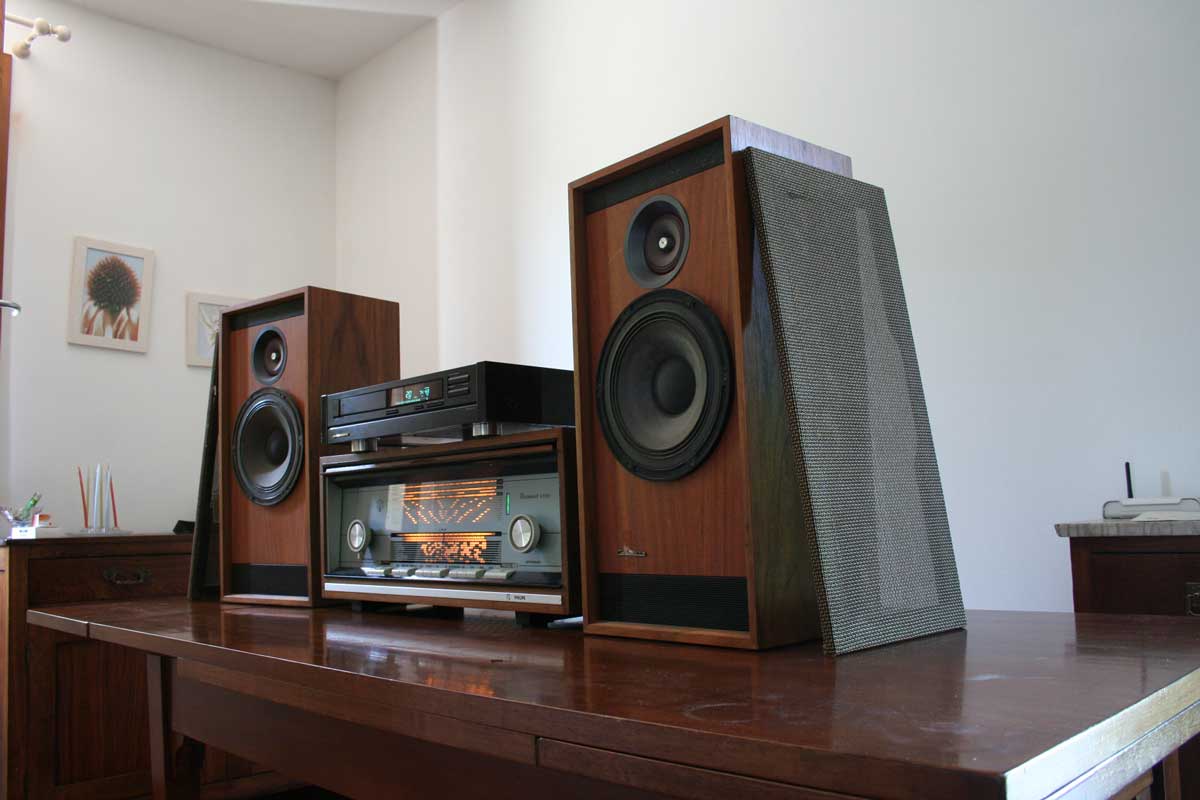
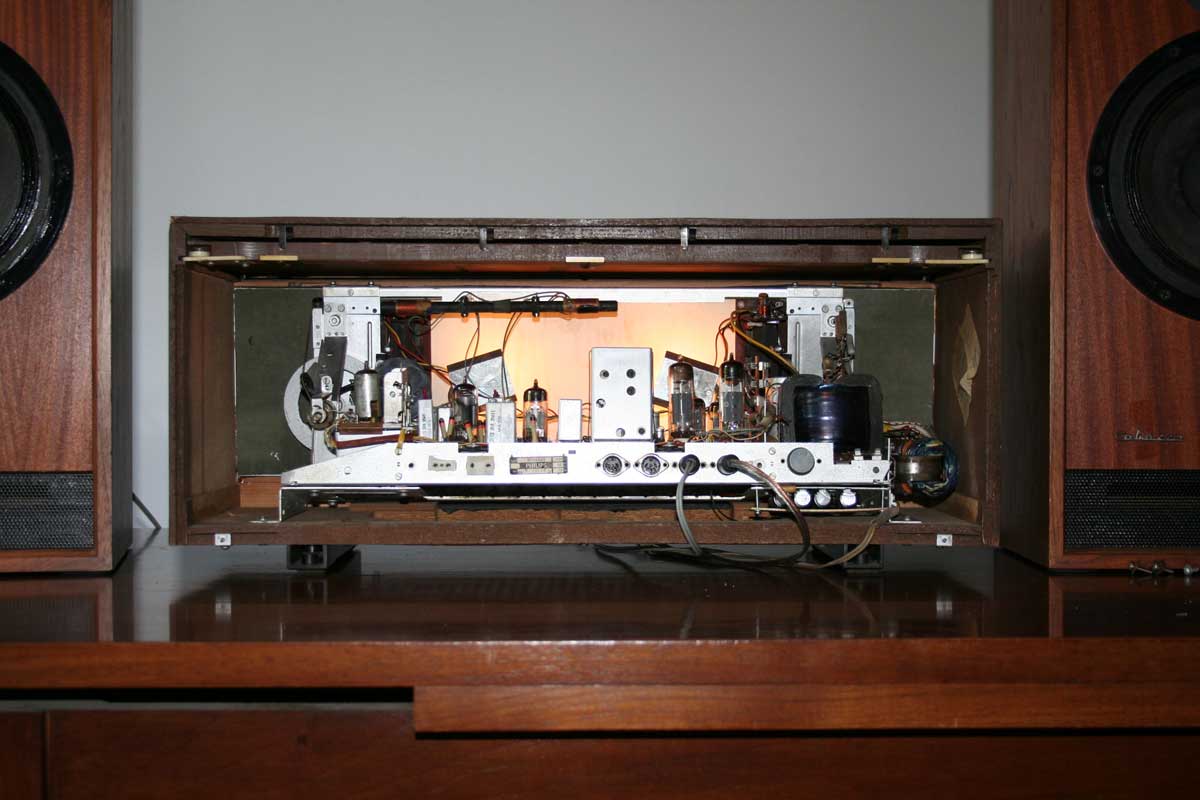

Philips products in Italy have always been a little ignored in the HI-FI world: they were linked to the other thousands of low technological content products, appliances, consumer products and so on that this producer has made through the years.

Nothing more wrong and superficial.
Philips is a manufacturer with a huge know-how. One of the best tuners in the world comes from them, the AH673.
One of the most broadband speakers in the world the AD9710 comes from them.
Even the invention of the compact cassette and then of the Cds comes from them.
They made maybe the best CD mechanism in the world, the CDM1, the first DVD recorder, the technology of the devices produced from a certain date with the Grundig, Marantz, B&O and other marks.
So, who snubs Philips does it for lack of knowledge.
Presented the manufacturer, let's talk now about the machine.
In greek mithology, Uranus god of the sky, Gaia's husband, threw his children in the bowels of the earth as long as they born to avoid their supremacy. Gaia, horrified, made for her 12th son, the titan Cronus, the adamantine sickle. Cronus evirated Uranus and from his genitals thrown in the sea was born Aphrodite.
Probably in the choice of the name at the Philips headquarters refered to the magnitude of the divinity, but it's a fact that the Uranus Tonmeister B7D52AS is one of the best tube receivers ever made by this manufacturer.
Built to compete with Telefunken Opus, Nordmende 3004, Grundig Stereomeister, owes the second part of its name “Tonmeister – Master of Sound” surely to the care it has been studied with, in any detail.
The output stages are made of couples of pentodes in Push-Pull with Voltage Negative Feedback without frequency correction. In this way it is ensured the maximum linearity with the less compression effect possible, undesireable effect typical of the Negative Feedback circuits. Other manufacturers made other choices and this determines the different personality of these devices.
The Philips by this point of view distinguishes for its timbre neutrality.
The pre-amplifier stage is provided with many equalization possibilities but I prefere to listen excluding them: I don't feel the necessity with these loudspeakers there's no acoustic deformation to correct.
The radio-frequency stage is of a very high level and classical setting provided with excludable AFC. Interesting the typical little IF transformers, difficult to de-tare and insensitive to fashes.
Even in this case I matched for this try-out the Uranus with its cousin Marantz CD94 MKII, wonderful machine with CDM1 component and a pair of TDA1541A in antiphase, one of the best existing machines, and to a pair of Cabasse Dinghy 222, high efficiency speakers described later.
The stations stay perfectly stable thanks to the AFC, so the listening of the tuner is very relaxing. The listening from the CD or other sources is timbrically very balanced.
Listening from an Ipod is possible and comfortable.
Even in this case its an authentic vintage Hi-Fi System with no compromises, for those who know exactly what they are buying.
The device is equipped with the rare Stereo Decoder, allowing you to listen to a multitude of FM Stereo broadcasts in stereo
It is possible to connect any speaker, preferably with high efficiency.
Built-in Bluetooth receiver
Each radio is equipped with a special cable that connects with any digital source.
- Separate loudspeakers - Using separate loudspeakers is an important option for stereo receivers. This allows you to couple the receiver to speakers best suited to particular space, design or acoustic performance requirements. The most suitable loudspeakers are analysed later, under loudspeakers.
- Stereo Decoder - The device has an integrated Stereo Decoder. This allows you to listen to stations that use this transmissions system in stereo. Many stereo receivers are not equipped with a Multiplexer so they work in stereo only when you select the record player’s /Recorder/Aux input . Such receivers, in listening to the radio, send the same signal to both channels, so listening is monaural. This is not the case with the Concertino 2380, which is totally beyond stereo.
- Built-in Bluetooth receiver - This unit can be equipped with a BLUETOOTH receiver powered directly from the device. That makes it possible to use the amplifier from any digital device, IPAD, Smartphone, or sophisticated multimedia station. You can listen to your wireless Web Stations or favorite music around the room. On request, we can also mount a Wireless Receiver.
- Multi Platform connections - Along with the device, we can also provides you an impedance adapter cable to connect any digital source, such as iphone, smartphone, computer, CD player, etc. This purpose-built cable adapts different impedances of modern digital equipment. Also the two stereo channels are collected into a single flow without increasing the load input unit.
In 1891, the brothers Gerard and Anton Philips, started to produce the first incandescent bulbs in Eindhoven.
Later, Philips specialized in the production of electro- medical equipment, and in 1918 introduced the first X-ray tube.
In the following years, Philips began specializing in the broadcasting industry. In 1932 the company succeeded in selling over one million radio equipment and became the world’s first producer.
During the Second World War, Philips transferred to the Netherlands Antilles, and returned to the Netherlands at the end of the conflict.
In the second post- war period, began the production of the first televisions, then the launch of the music cassettes in 1963 and the production of the first integrated circuit in 1965.
In 1982 Philips launched with Sony the first compact disc player.
In 1984 Philips acquired the control of the German Grundig.
In the 90's Philips faced a financial crisis.
In 1991 it inserted on the market the Video CD and it is one of the first companies in the world to develop high definition television.
In 1999 Philips established a joint venture with LG Electronics, named LG Display, which ends in 2009.
In 2006 together with Sony launched the first Blu-ray.
In 2009 Phillips launched the first full-HD LCD TV in 21:9 format.
Phillips holds 48,000 registered patents.
Currently, the production is focused on low- energy lighting products and LED systems and services for diagnostics and production of medical devices.
Year of production: 1966/67
8 Circuiti AM
12 Circuiti FM
Wavebands:: LW, MW, SW, FM
Operating voltage (CA): 110; 125; 220; 240 Volts
Mobile in legno con frontale chiudibile
Dimensions (LHP): 562 x 195 x 280 mm / 22.1 x 7.7 x 11 inch
Net weight: 13 kg / 28 lb 10.1 oz (28.634 lb)
Potenza d'uscita: 8 + 8 W
11 Valvole: ECC85 ECH81 EF89 EBF89 EM84 ECC83 ECC83 EC92 EC92 ELL80 ELL80
Rotating ferrite aerial for AM bands


The output stage has been already briefly described in the introduction of the machine, its a clasic Push-Pull in AB class that produces an 8W power per channel.
The interesting fact is the load resistence that excludes automatically when the speakers' jacks are plugged in, avoiding the overload of the final stadium in case of powering it up without speakers connected.
The device is equipped with two aerials. A ferrite for AM ranges and a wire loaded for the FM range.
Listening to AM was already considered unimportant at the time, outlined by FM features.


The correction system of the frequency response, quite antiquate command in such a machine but at the top those years, is made of three buttons that instert three pre-defined equalization curves.
I prefere to listen with the “Jazz” button switched.
The tone control system is very efficient. Above the large tone control knobs there is a band that lights up gradually indicating the emphasis on the band on which it acts.







The unit is equipped with mechanisms for keeping separate the AM and FM bands.
The movement is transferred to both mechanisms with a system of pulleys and separated gears.

The Automatik button is the one of the AFC that permits to maintain always perfectly tuned a station once tuned in.
That is not to be used during the research of the station, otherwise the receiver would concentrate only on the most powerful stations.
Once tuned-in the prefered station pressing this button the receiver will correct automatically possible frequency skiddings, keeping always perfectly tuned.
Coaxially, we find the balance knob.
The magic eye that indicates the presence of a stereo station.
Going on, we find the AM scale for the Long, medium, and short waves and the FM scale.
Furher on the right we find the tuning knob.
The magic eye that indicates the perfect tuning of each station.
Below we find in the order: bass controls, on and off buttons, the three EQ buttons, the mono/stereo button, and the selection of the inputs buttons (Turntable, Recorder/CD, AFC, long medium short waves, FM)
We find in the end the treble control.

I used the Dinghy 221 and 222, prefering the last ones even if more expensive, because they keep almost every feature of the single-driver (the woofer is cut at 5000 Hz) with an extension, on the tops and on the lows that the 221 can only dream.
Because of the crossover the efficiency is lower than 2db but still remains very high, settling at 96db.
This feature allows the Telefunken to be used normally at a fraction of its real power, for the benefit of linearity.
The Dinghy sound very fast despite the appearence, the string instruments come out of the speakers with an effortlessness that makes them get close to the Open Baffle.
The loudspeakers are of very high quality, made on Cabasse detailed bill.
The cabinet is well finished and its dimensions are incredibly limited for the performance they offer.
The material published is taken from the very interesting trans-apline forum dedicated to this prestigious brand: vedi
AM and FM antenna inputs and ground socket.
Output for external speakers.
Socket for recorder (tonbandgerat).
Turntable input (Tonabnehmer)



